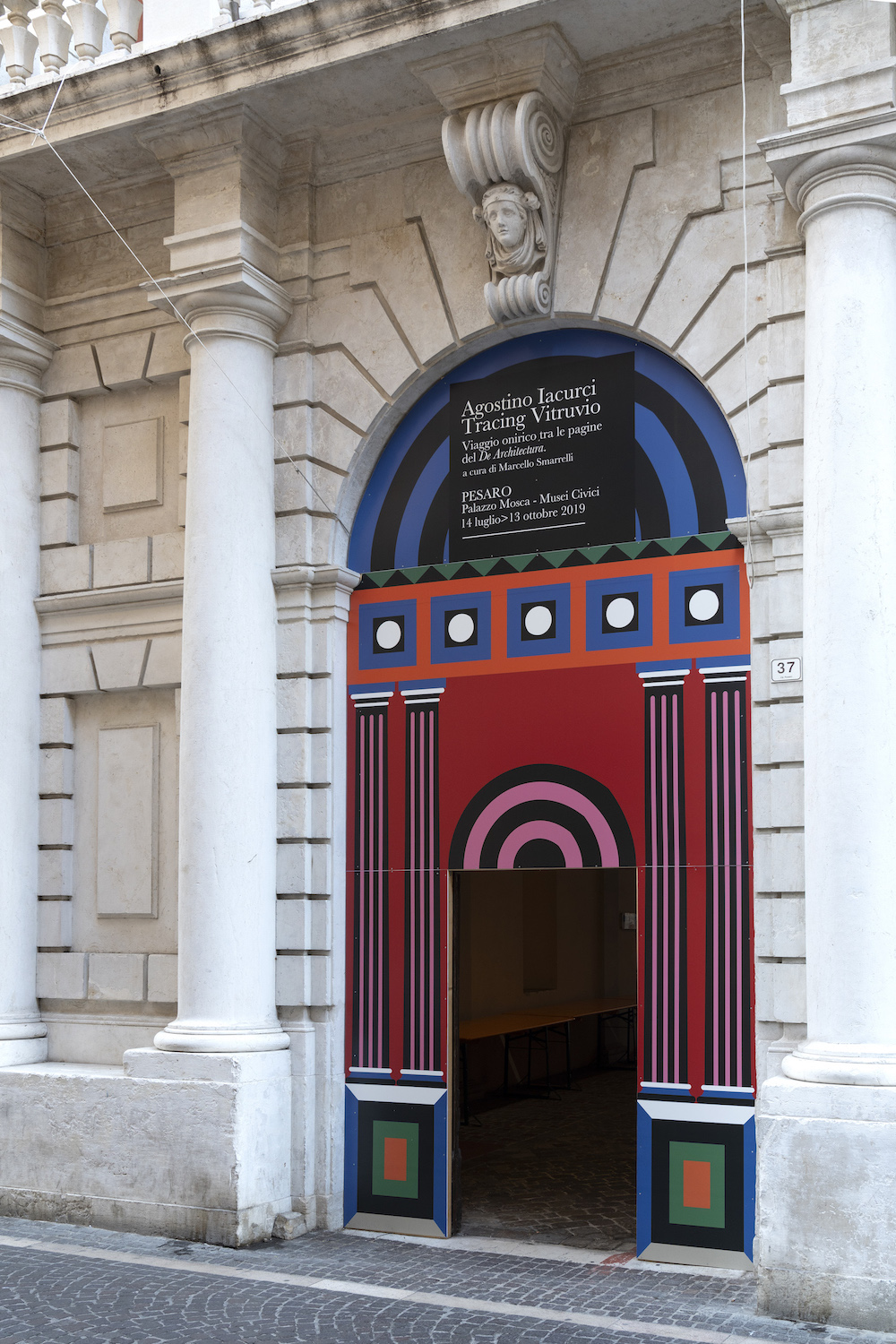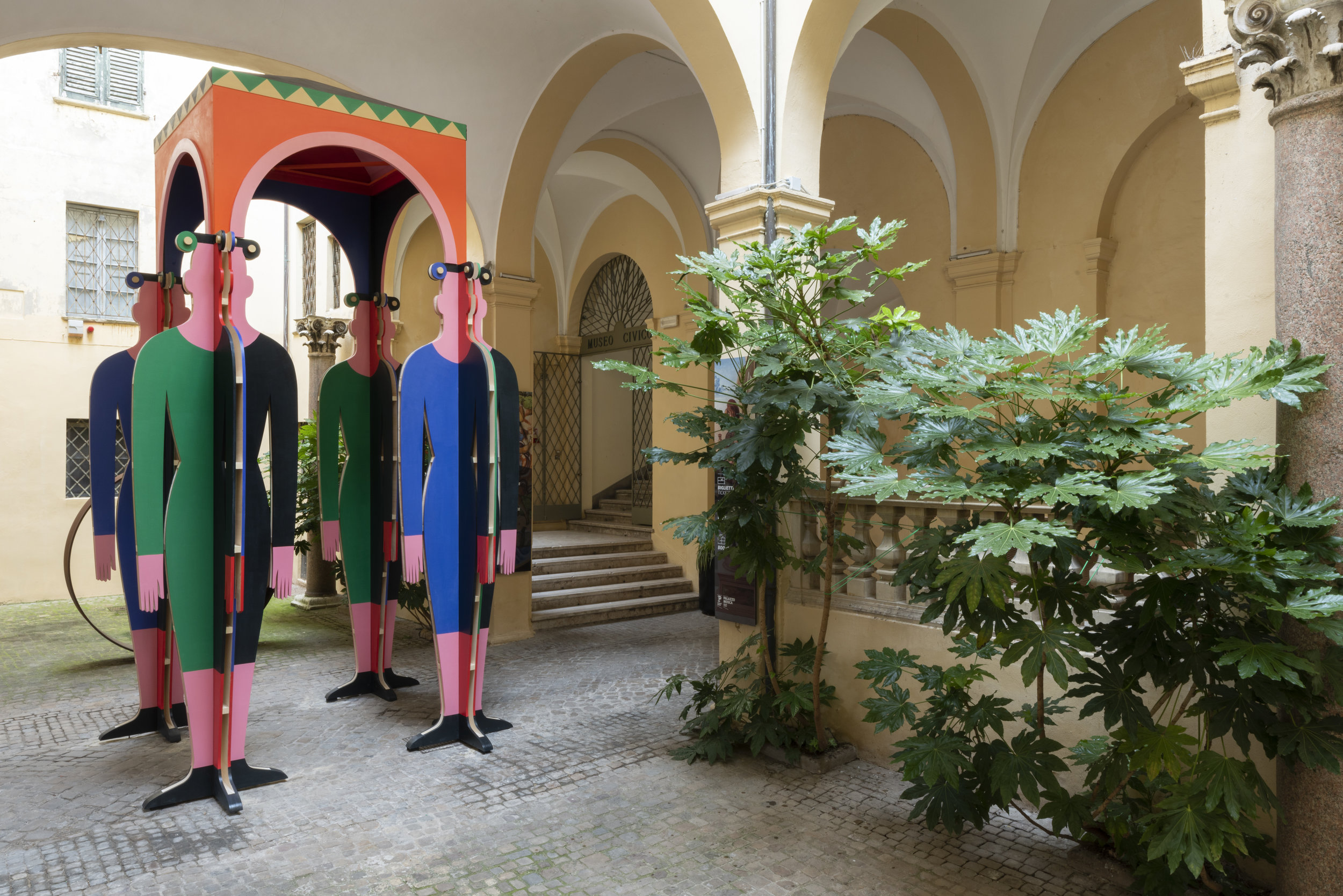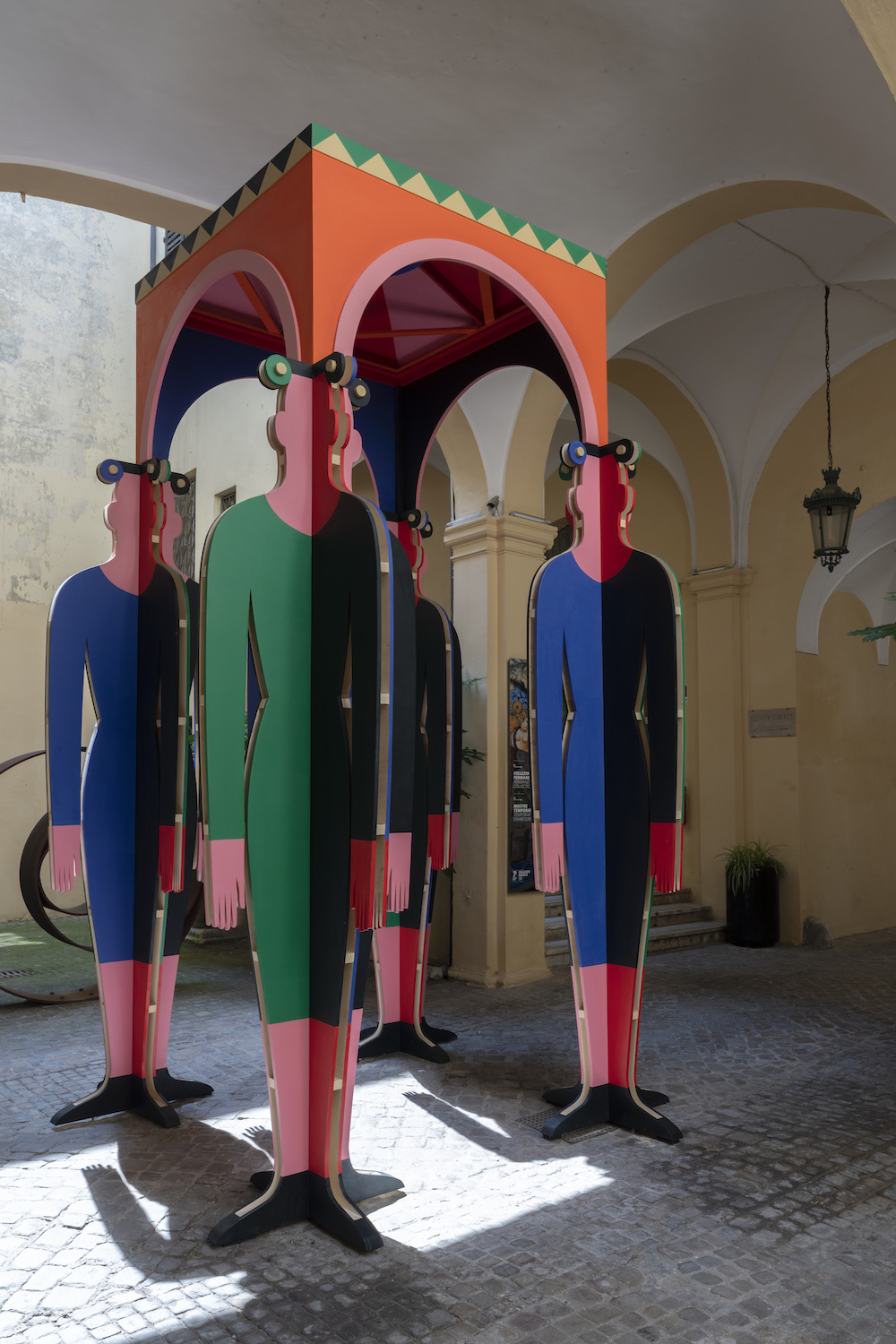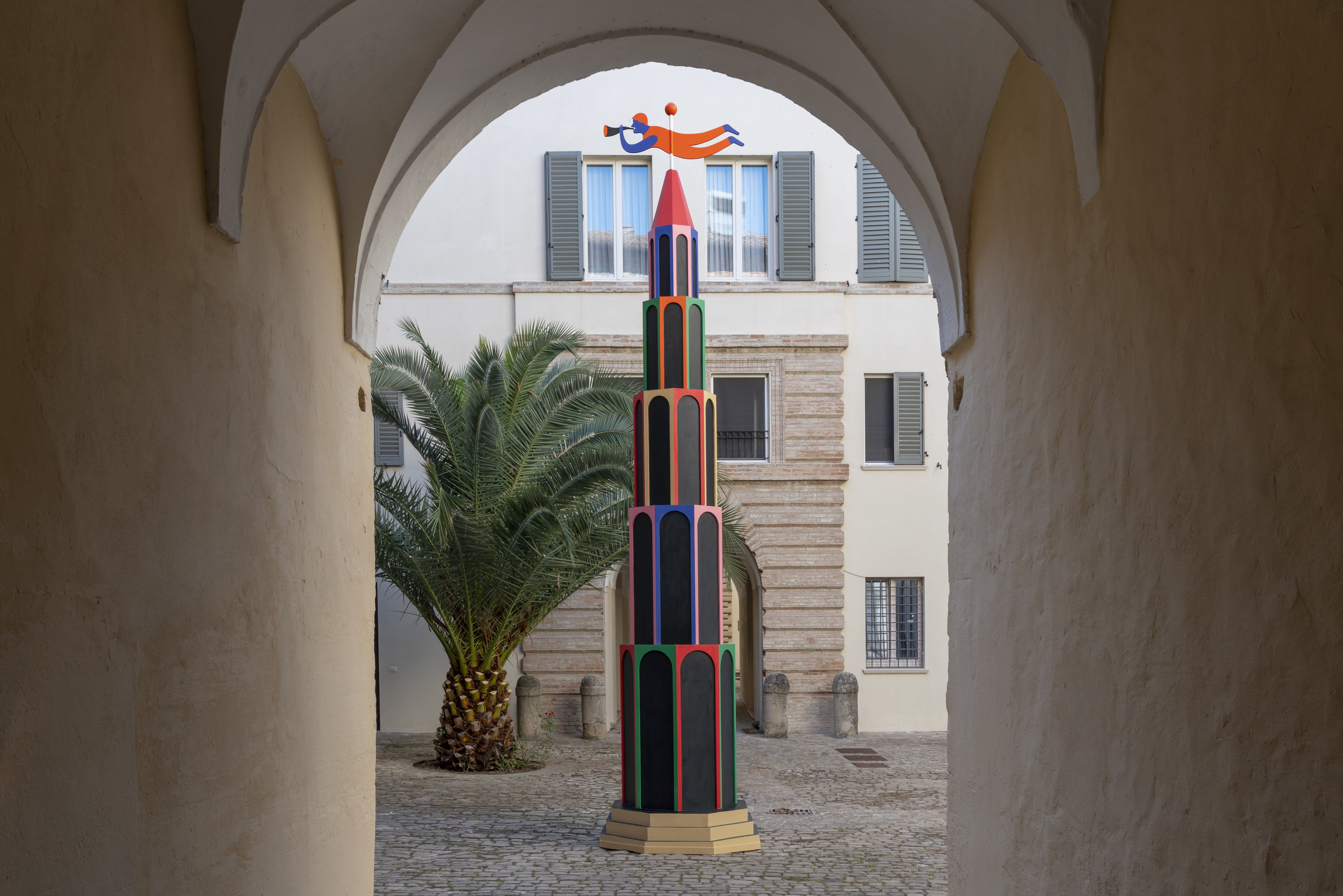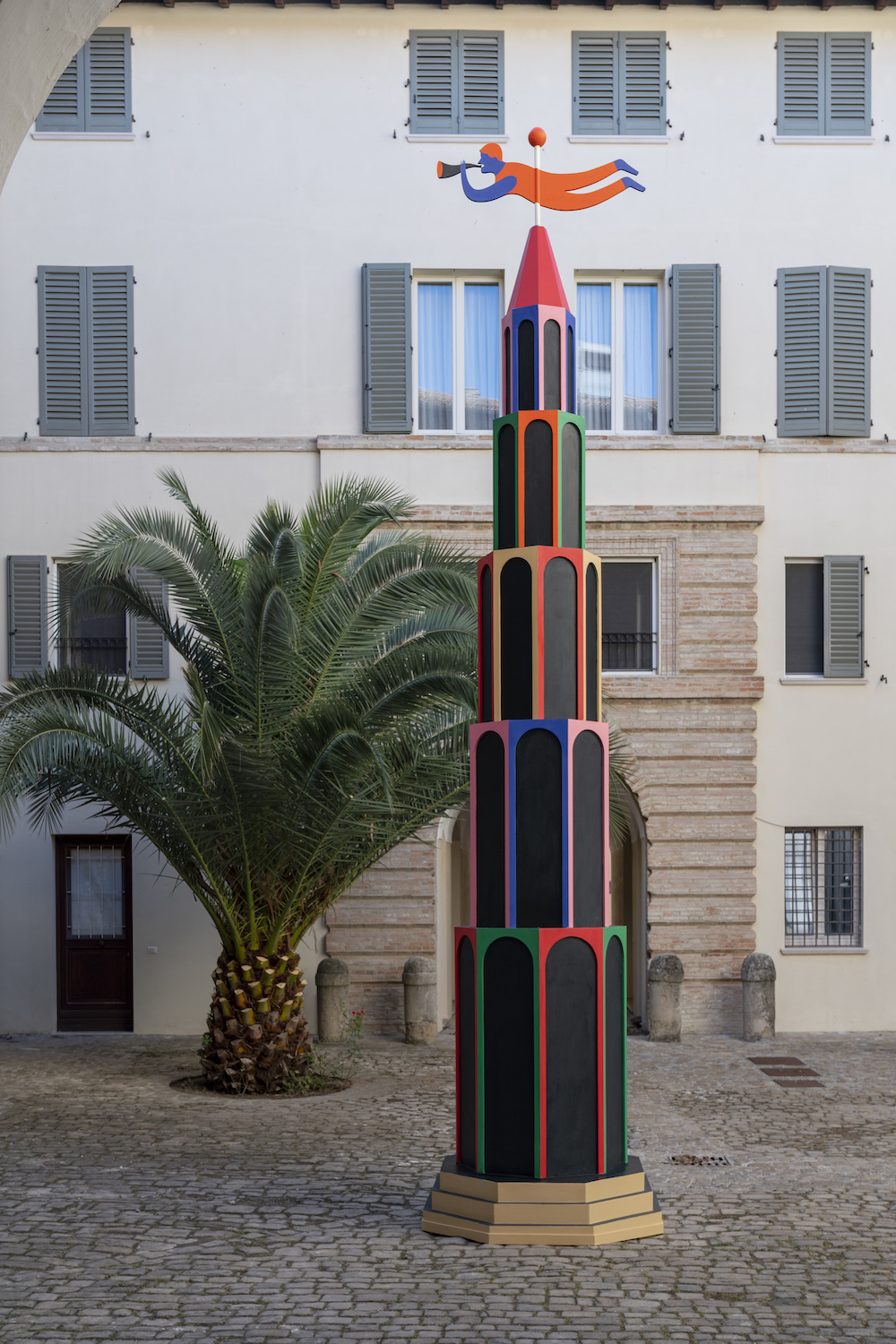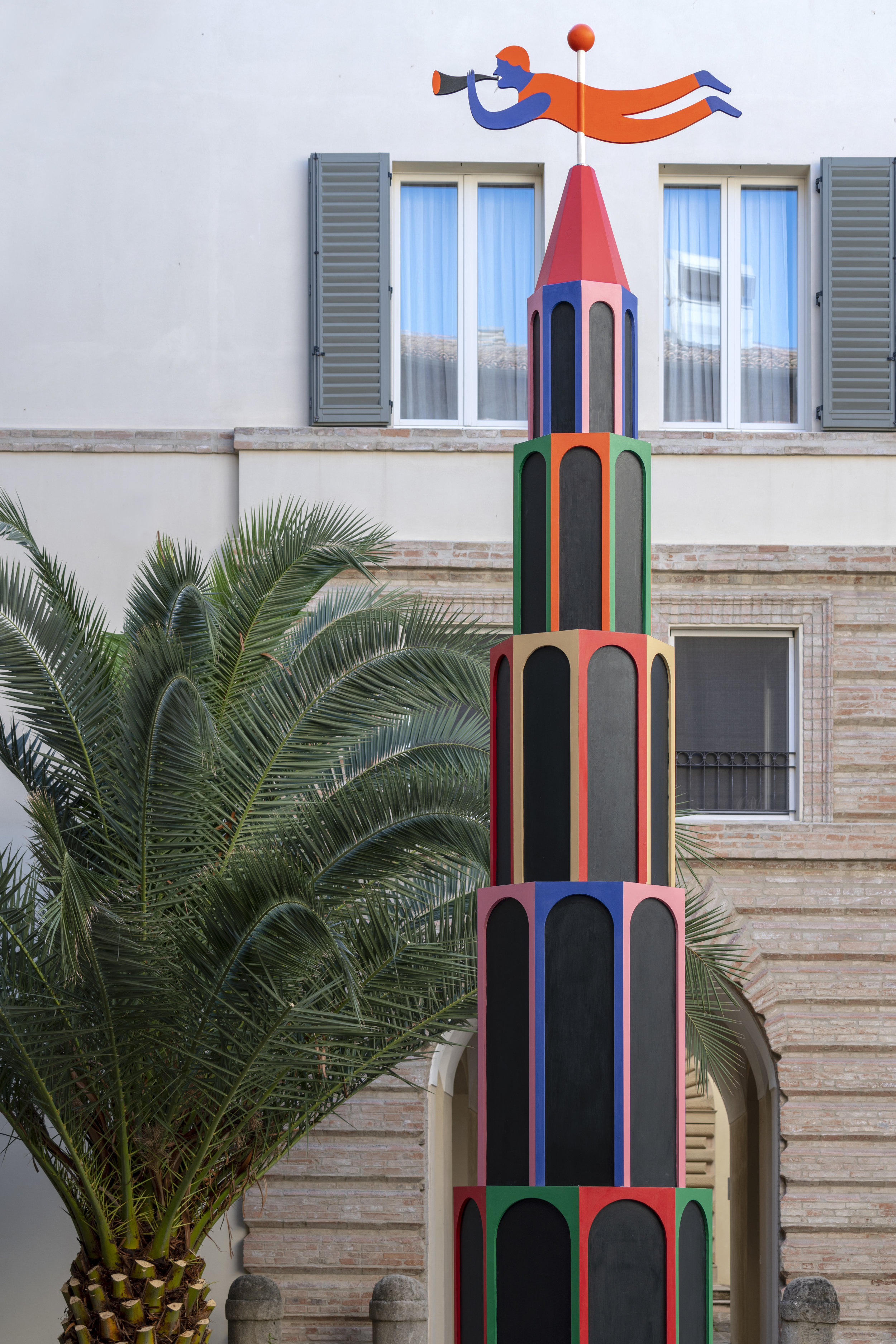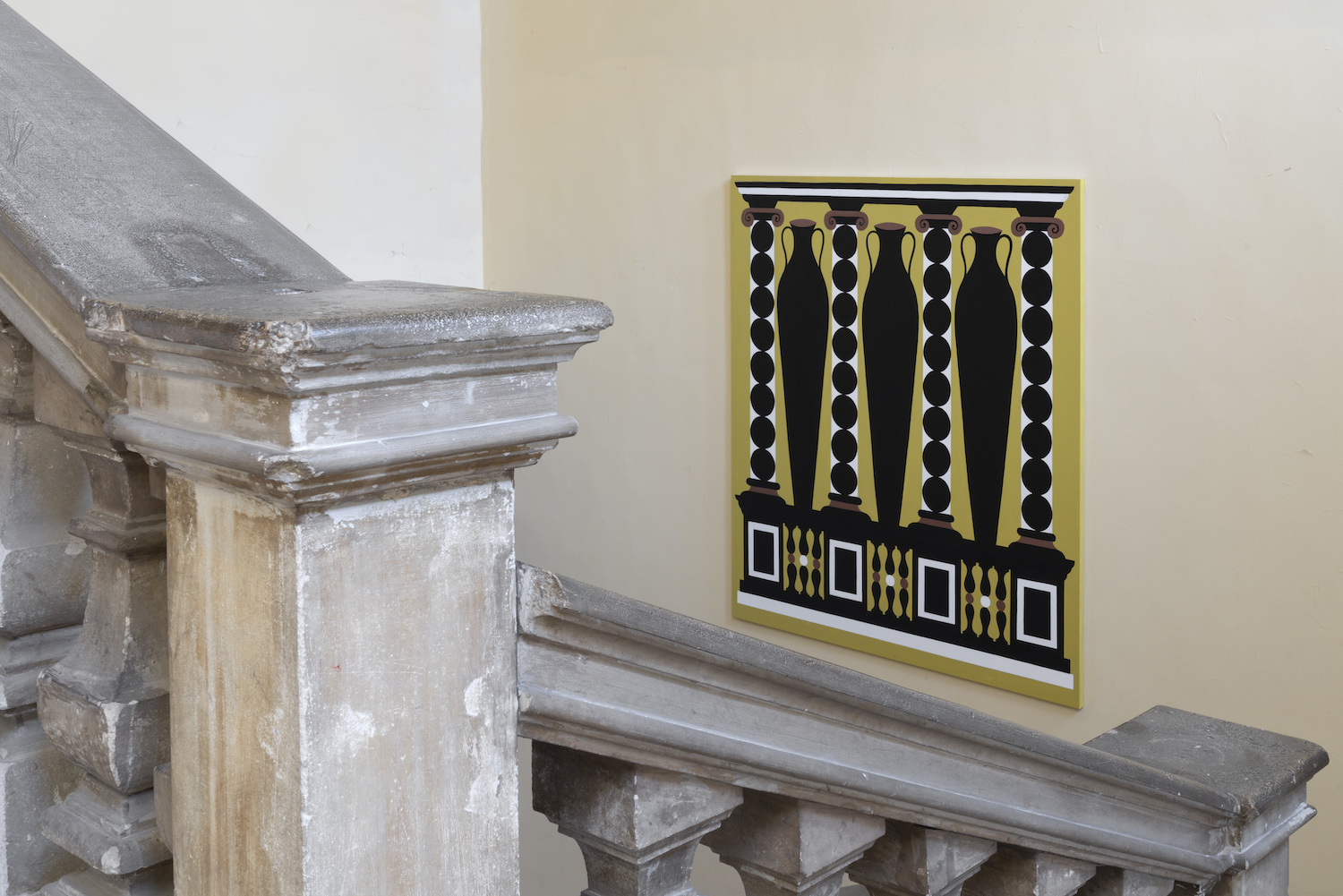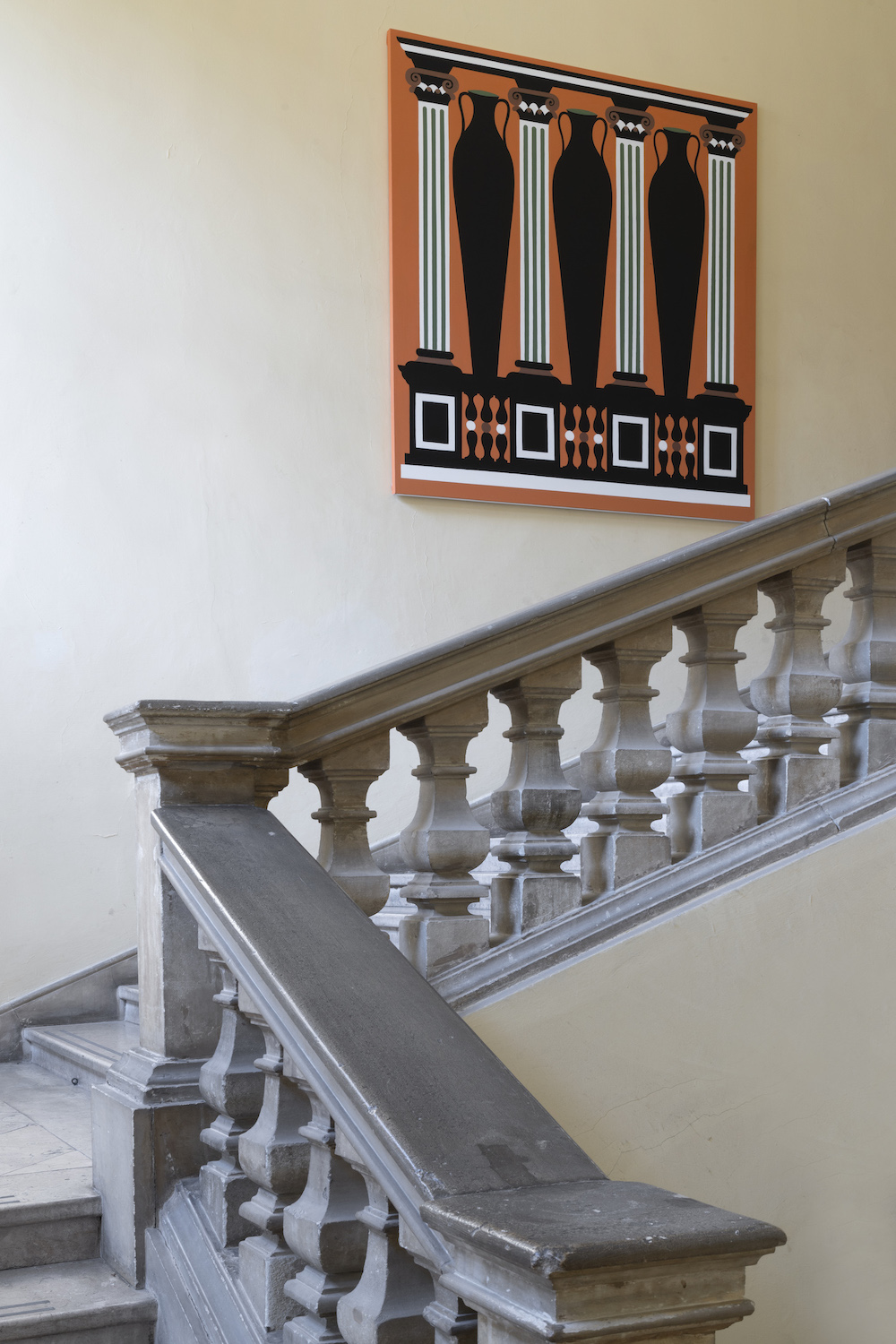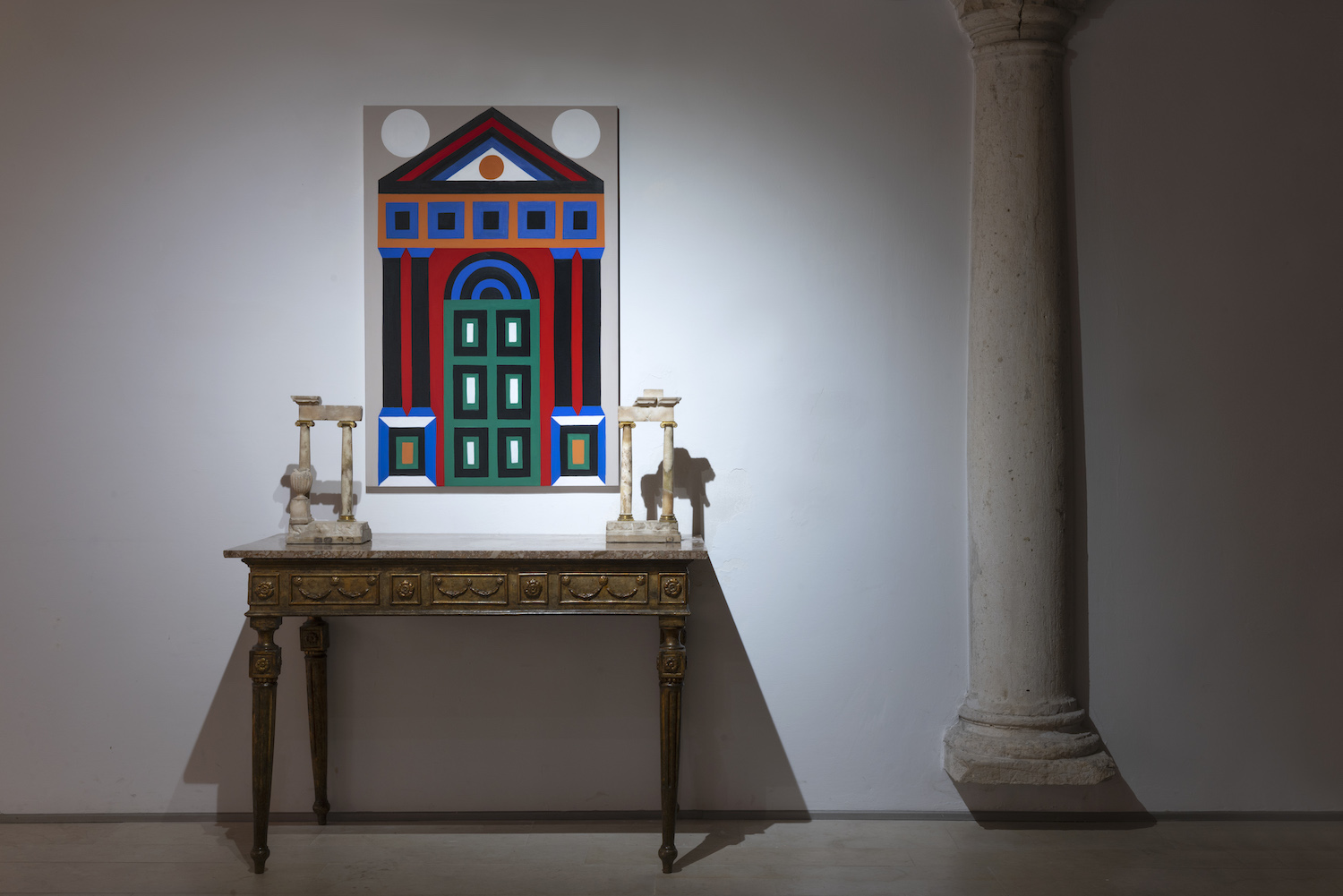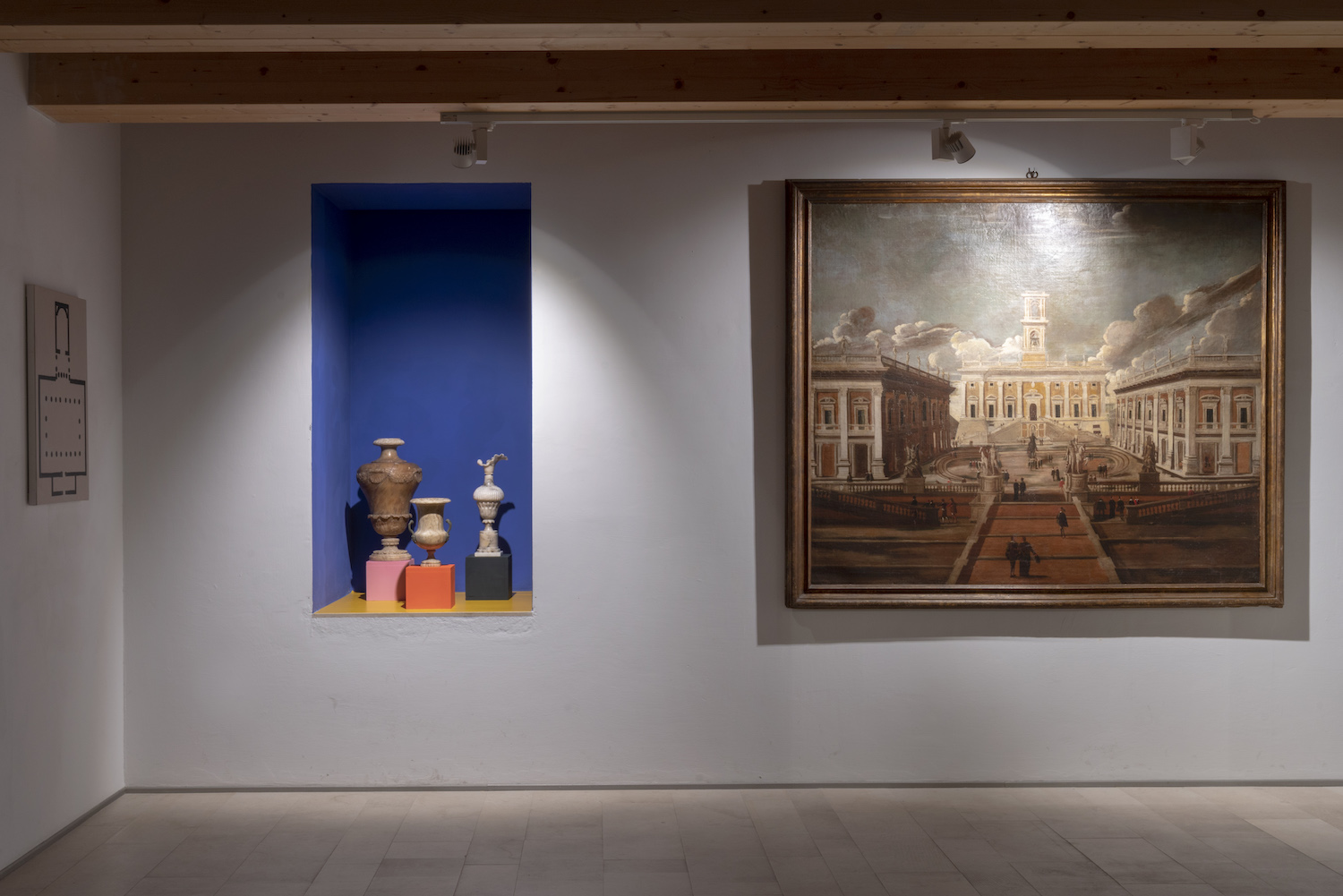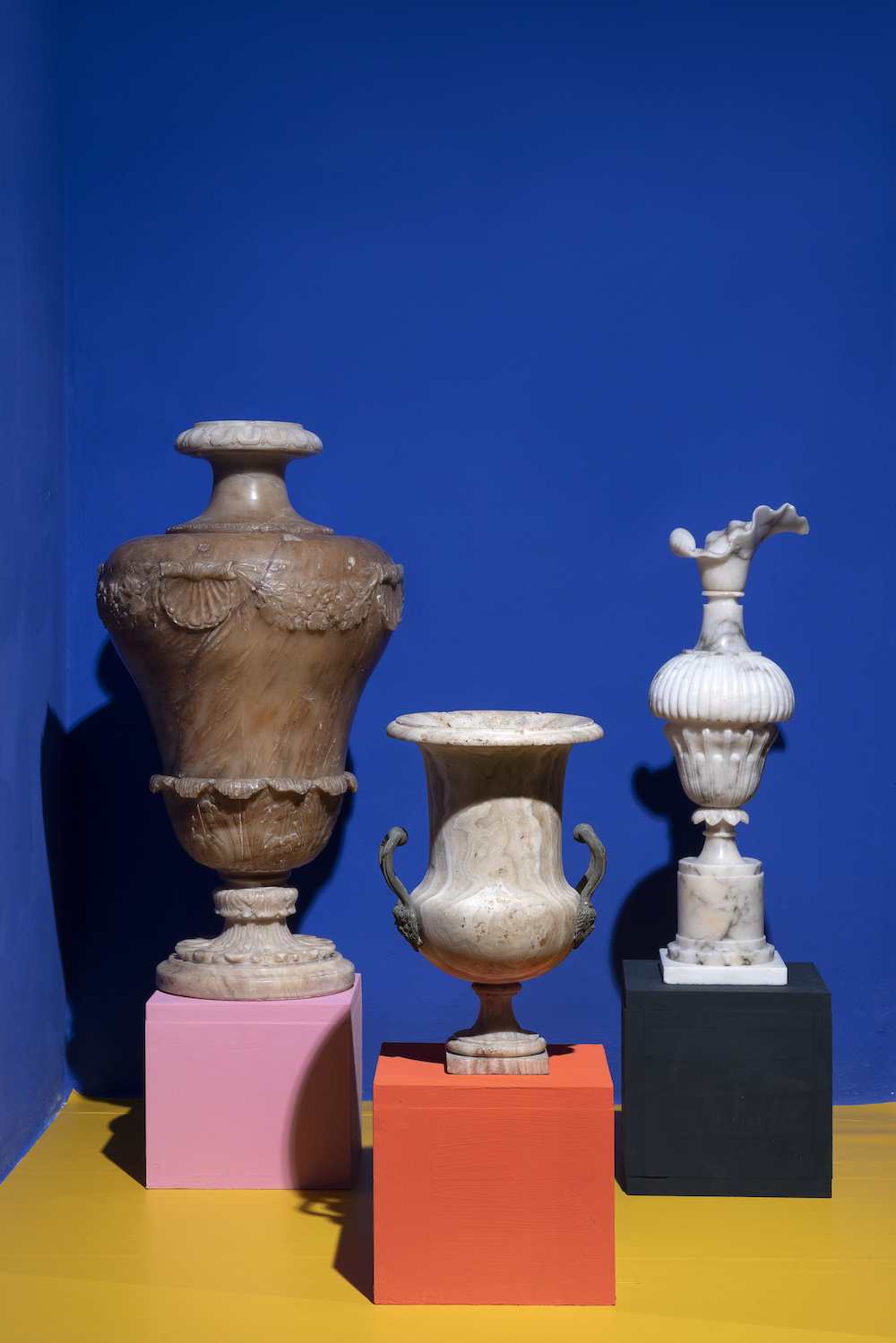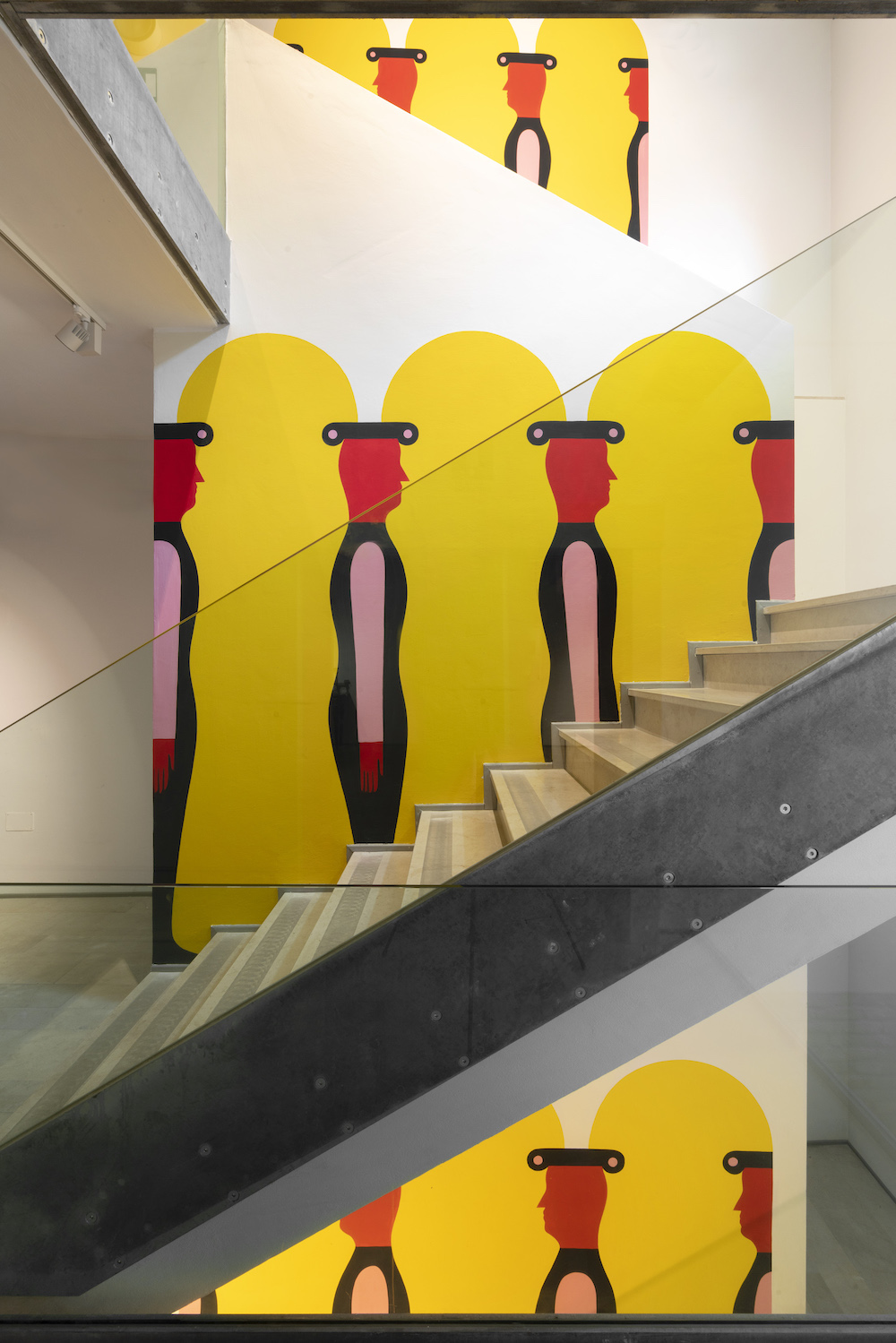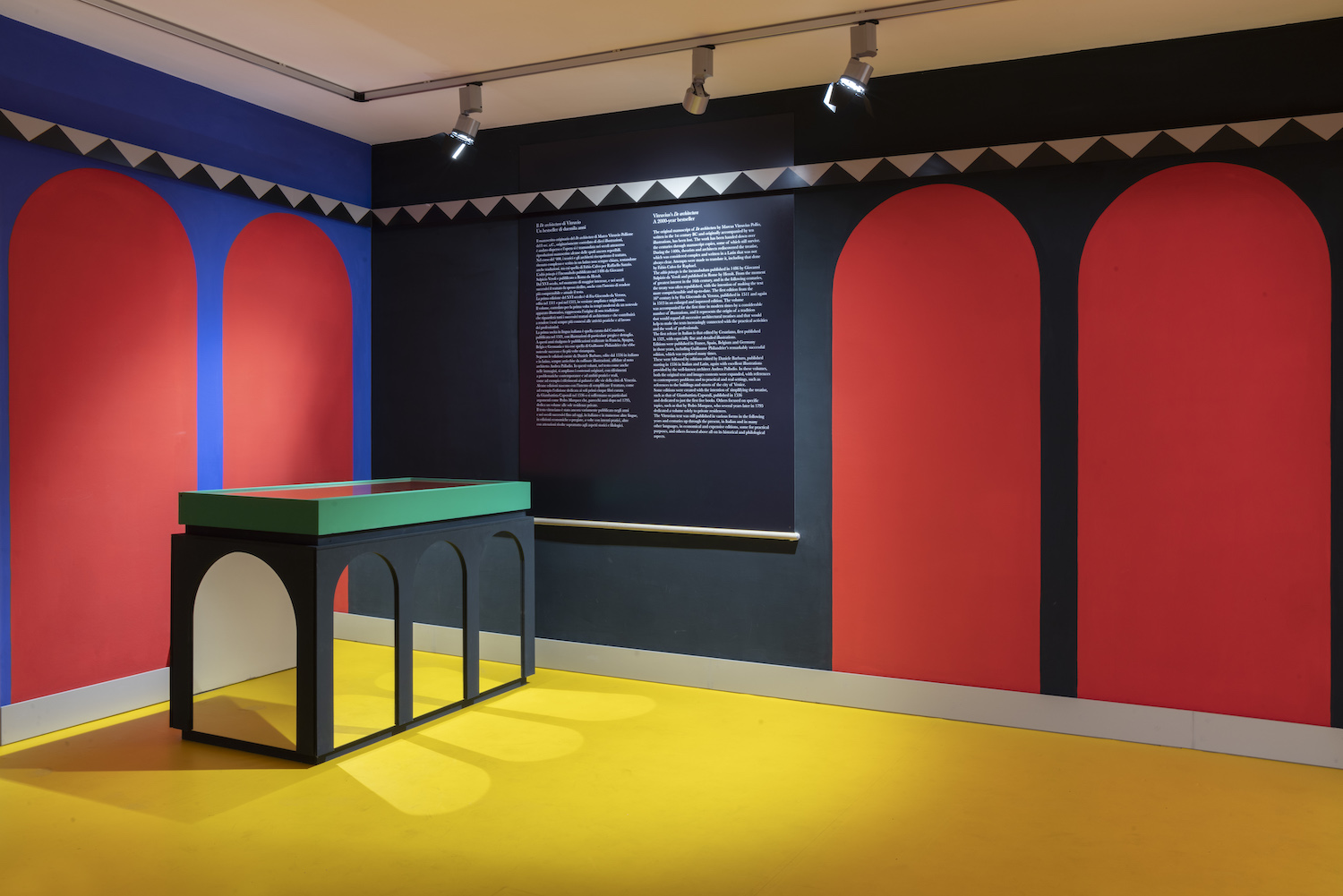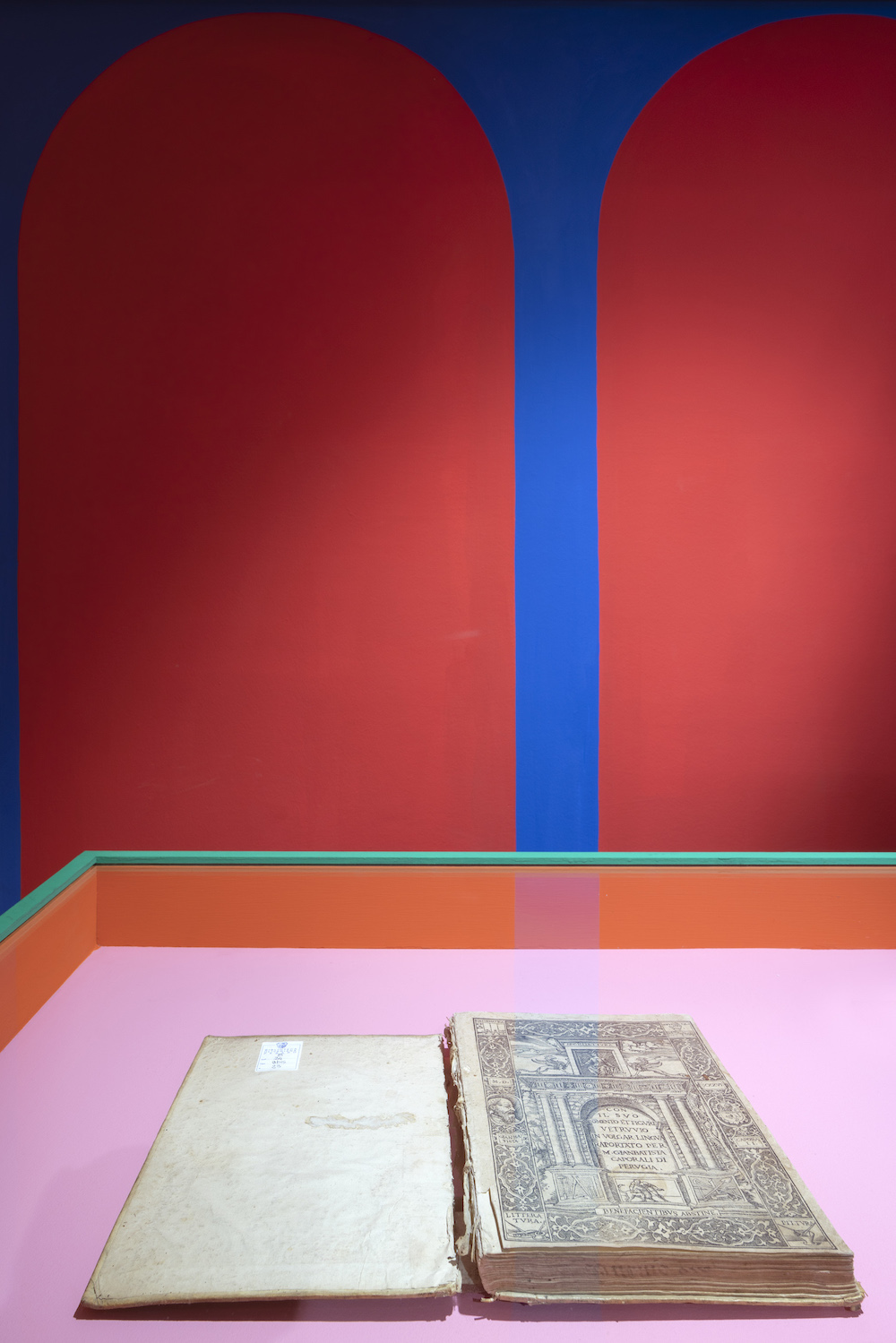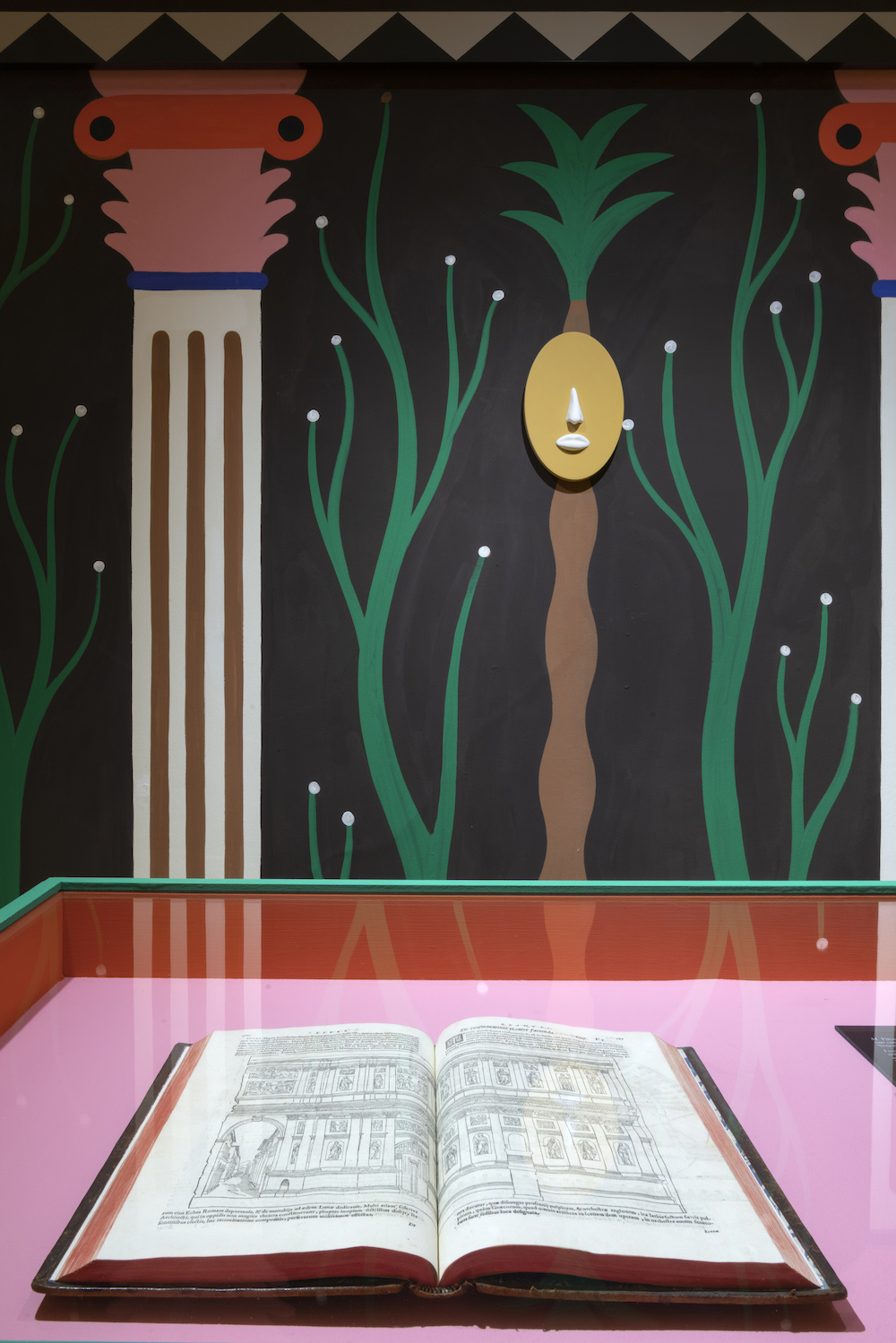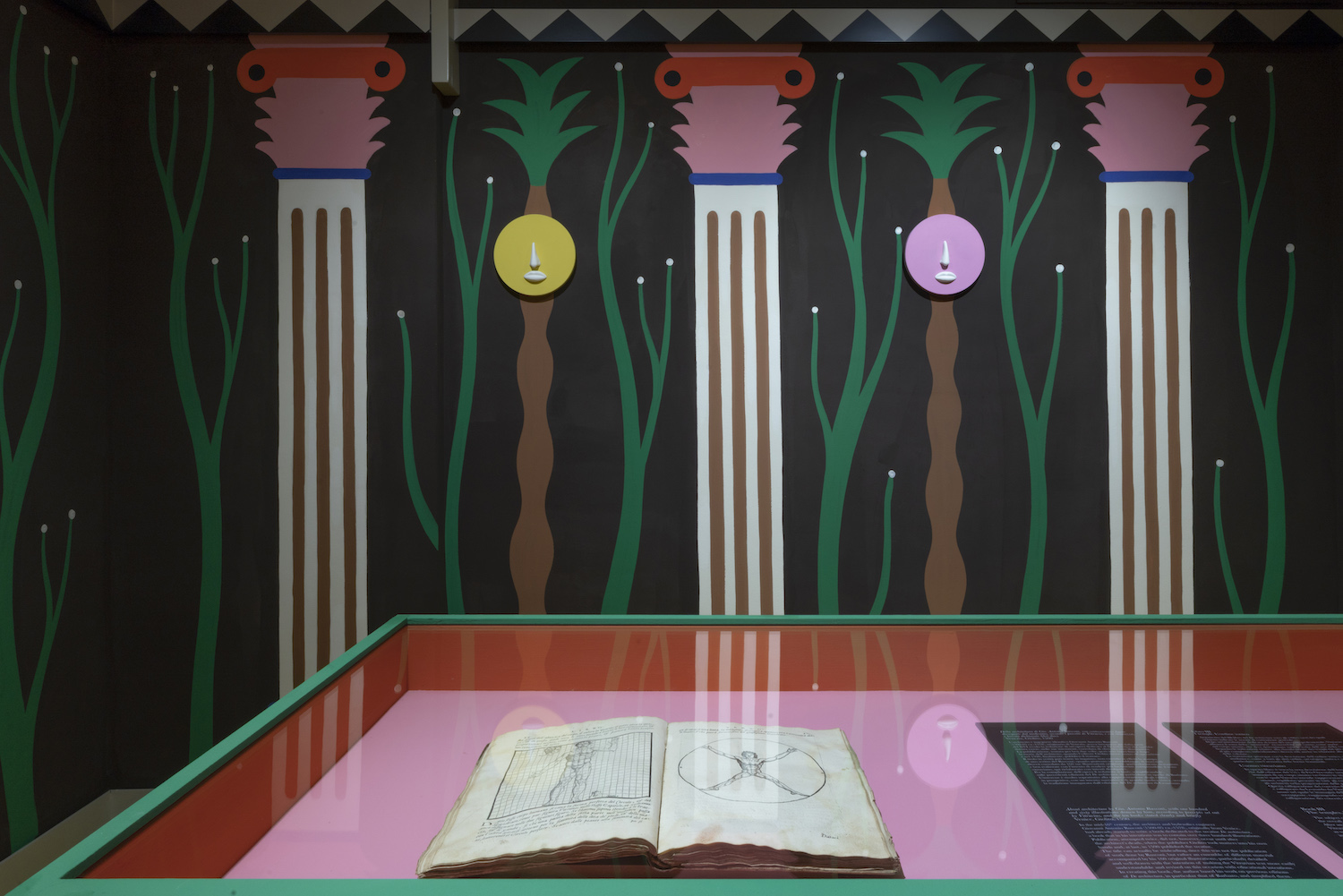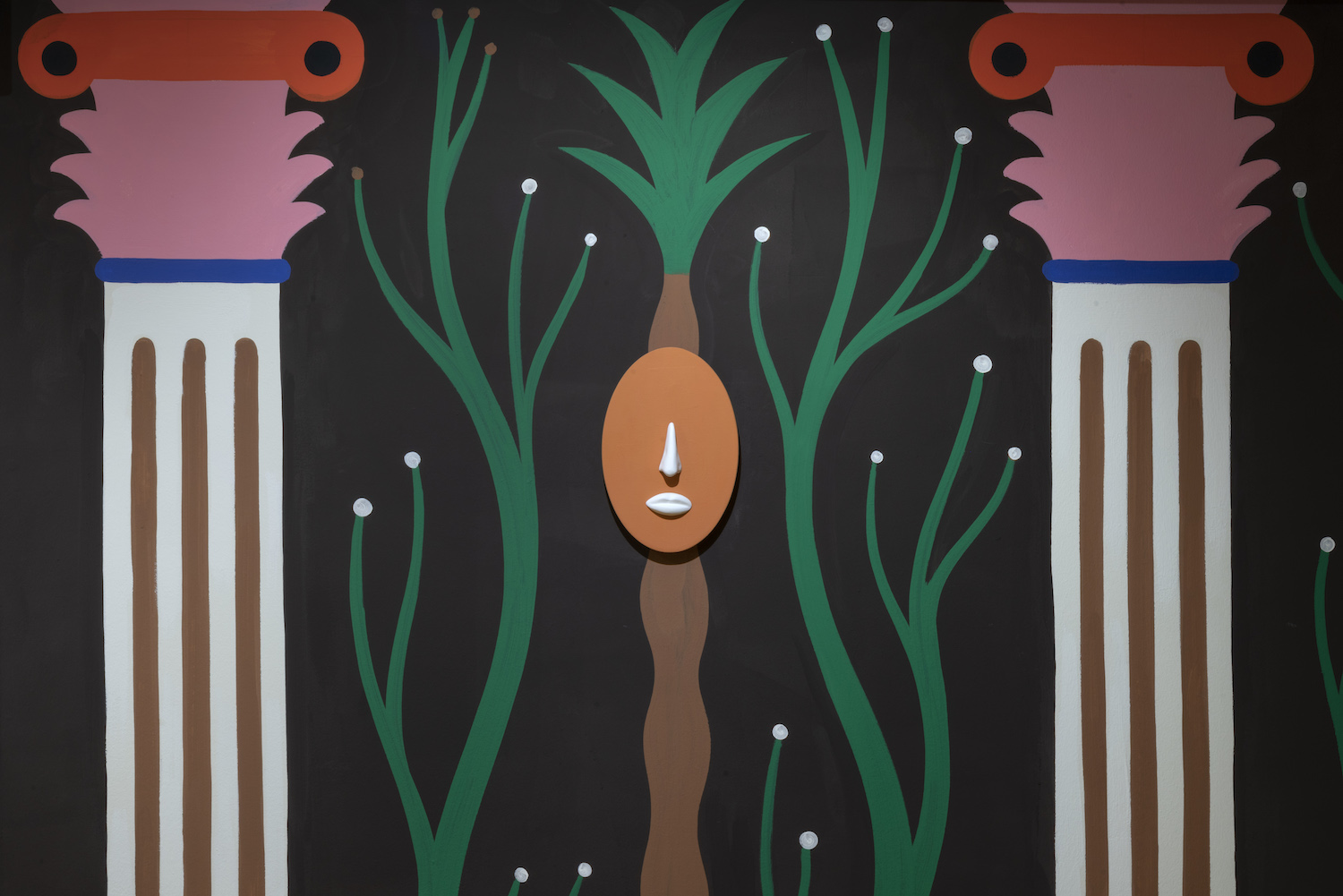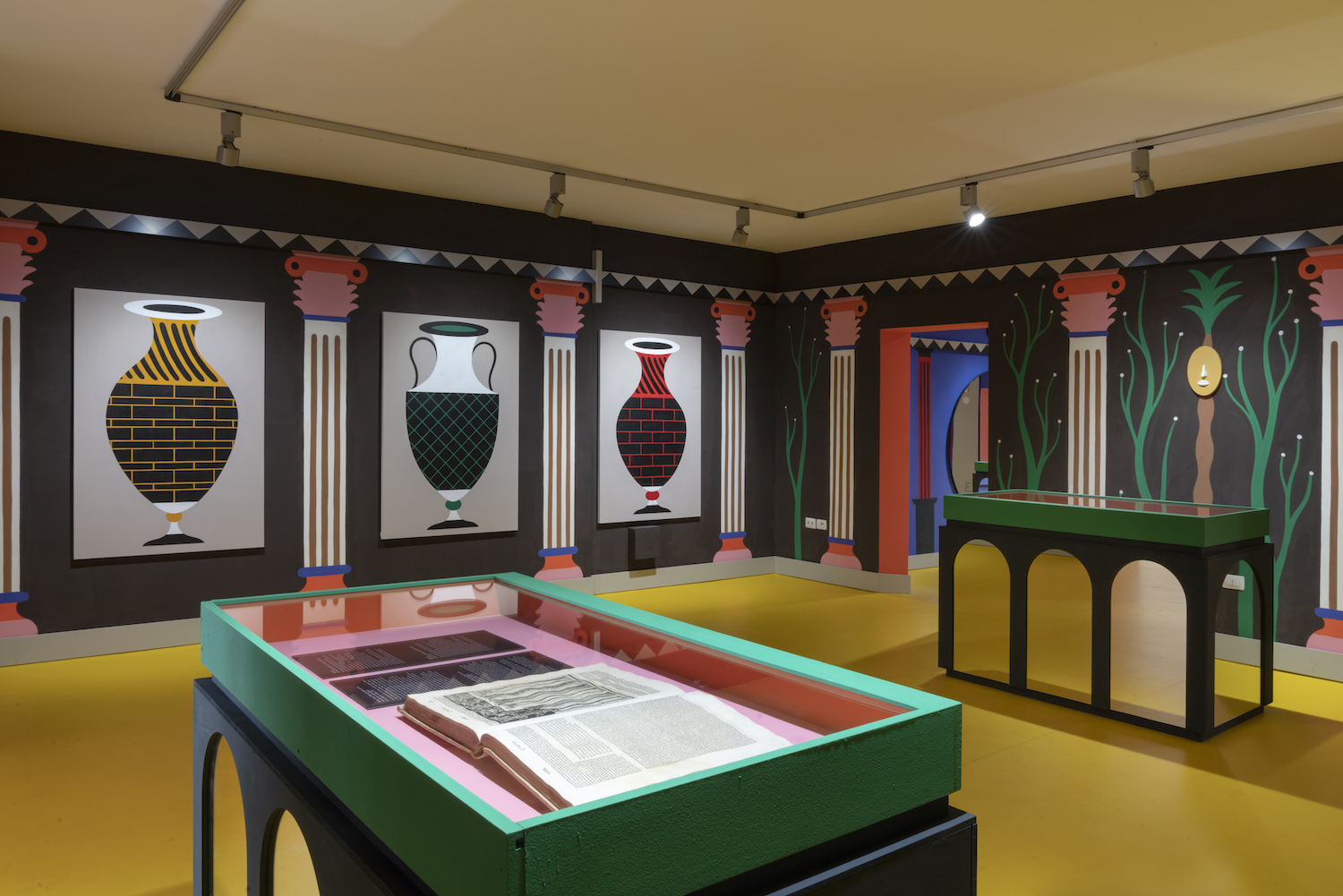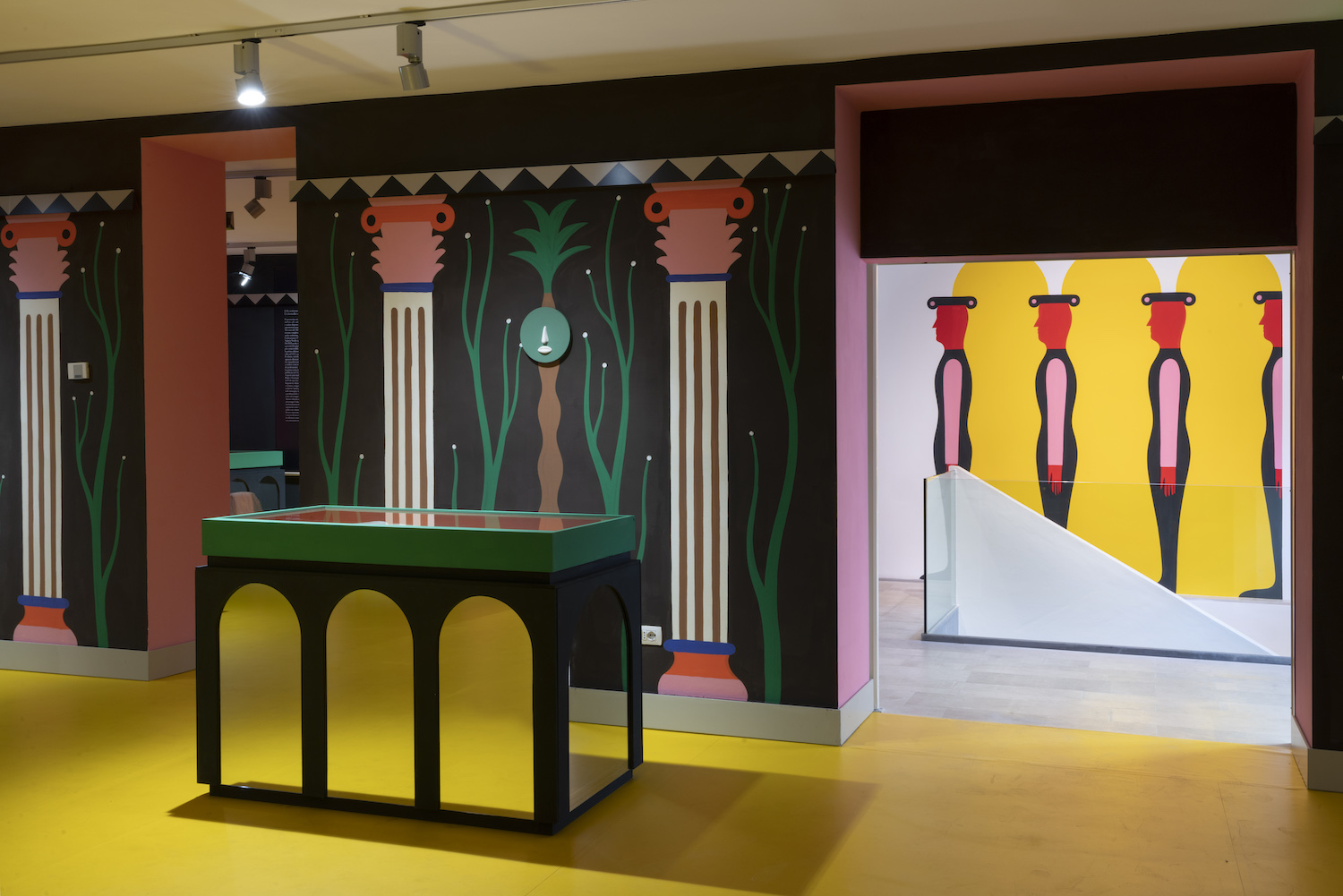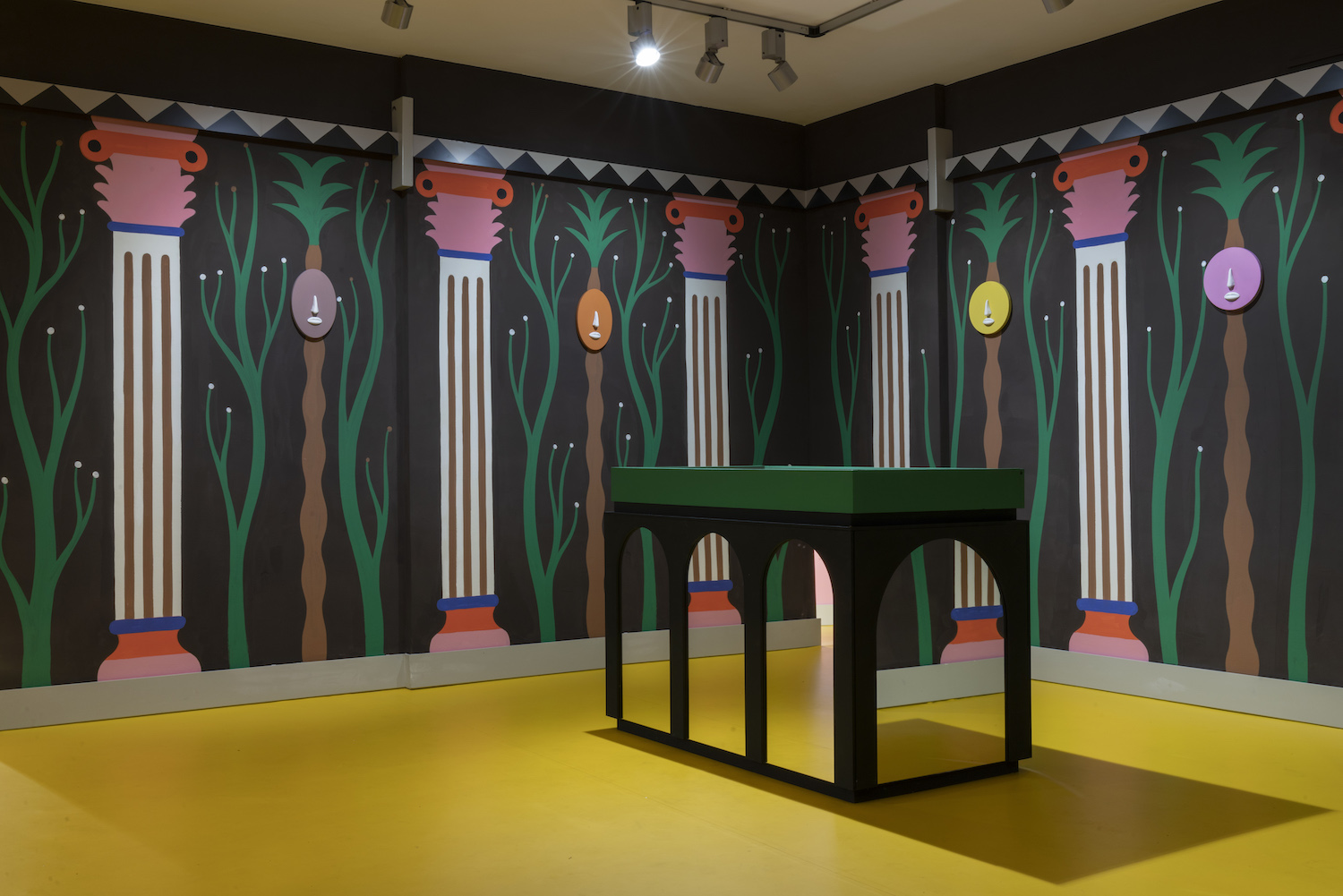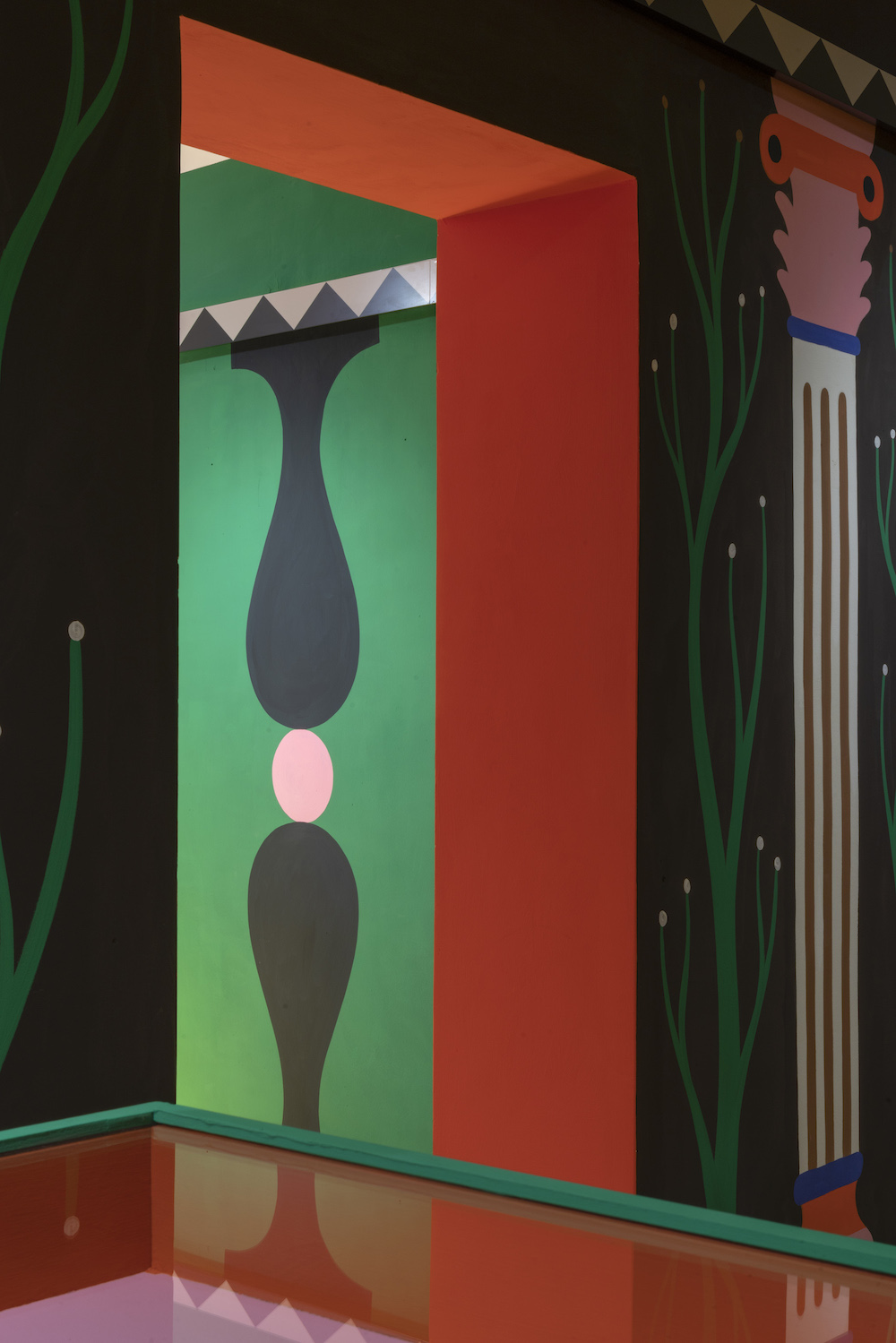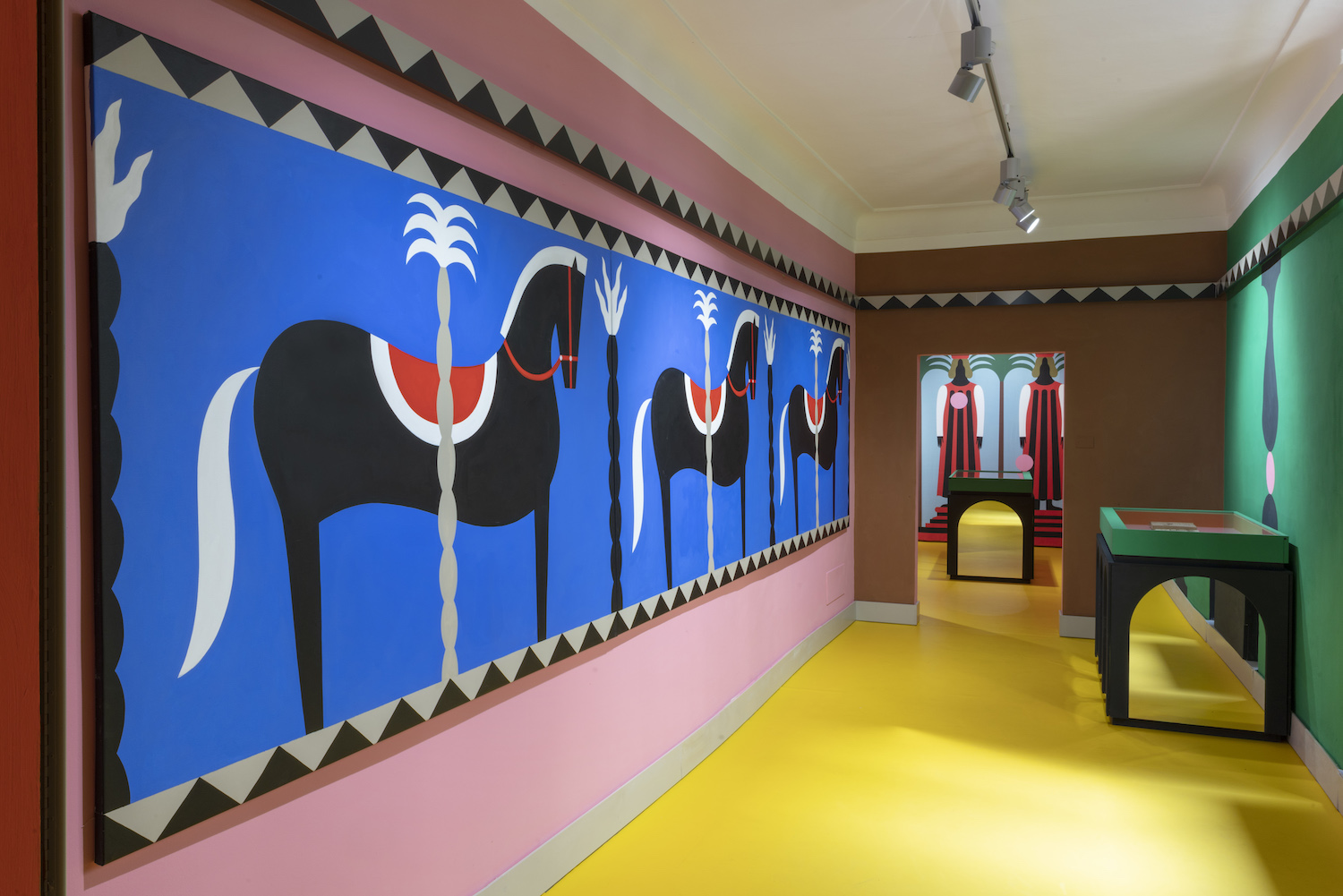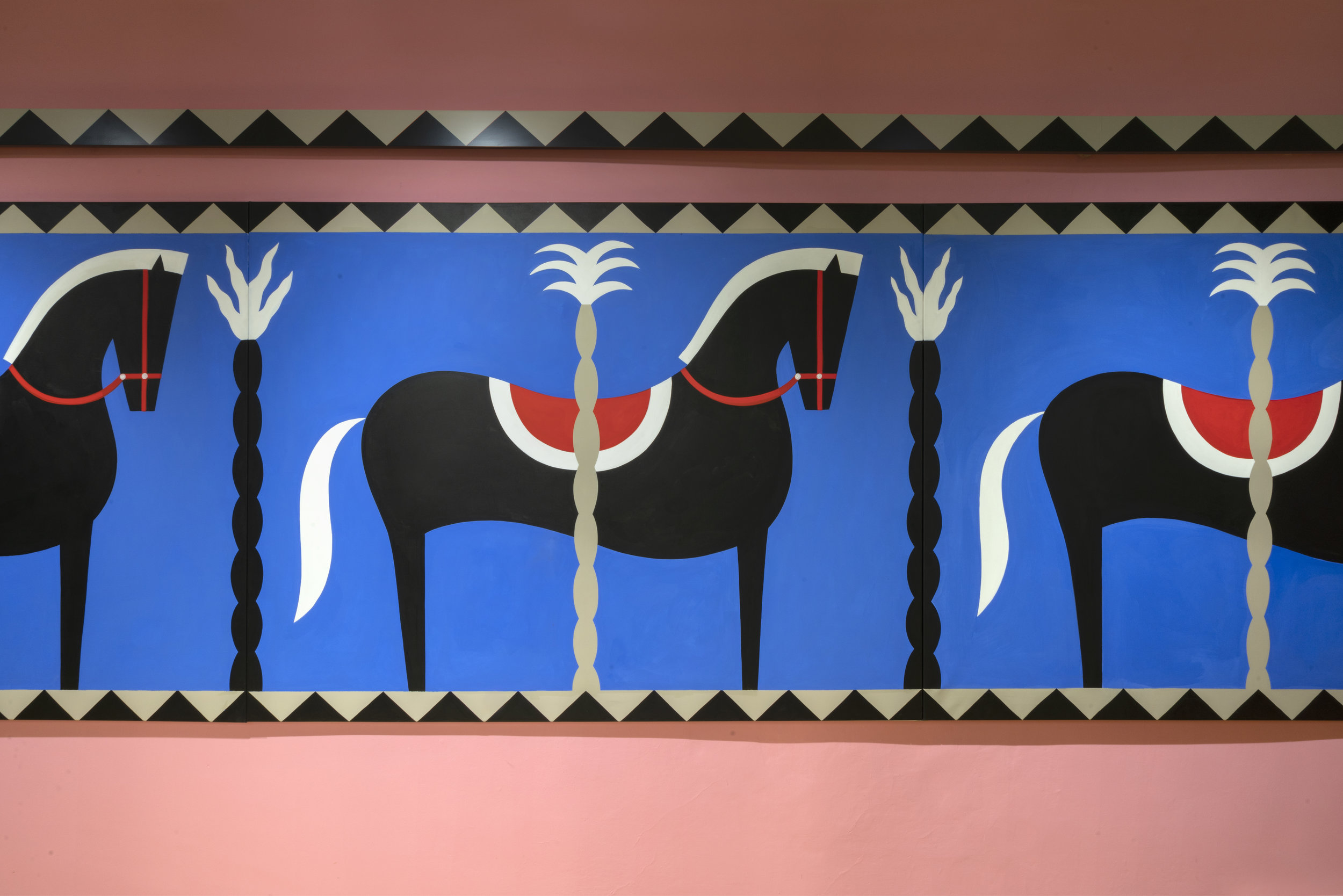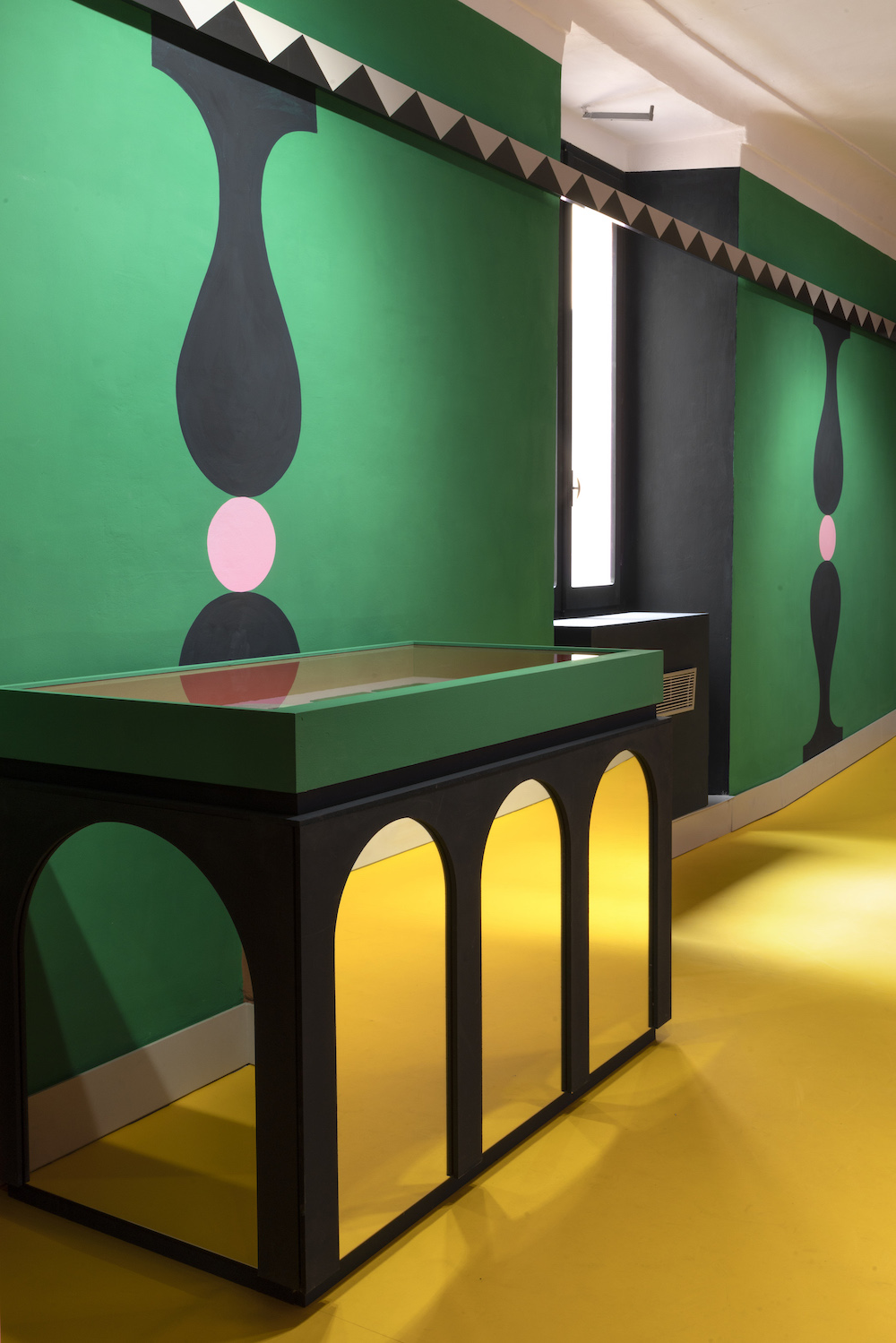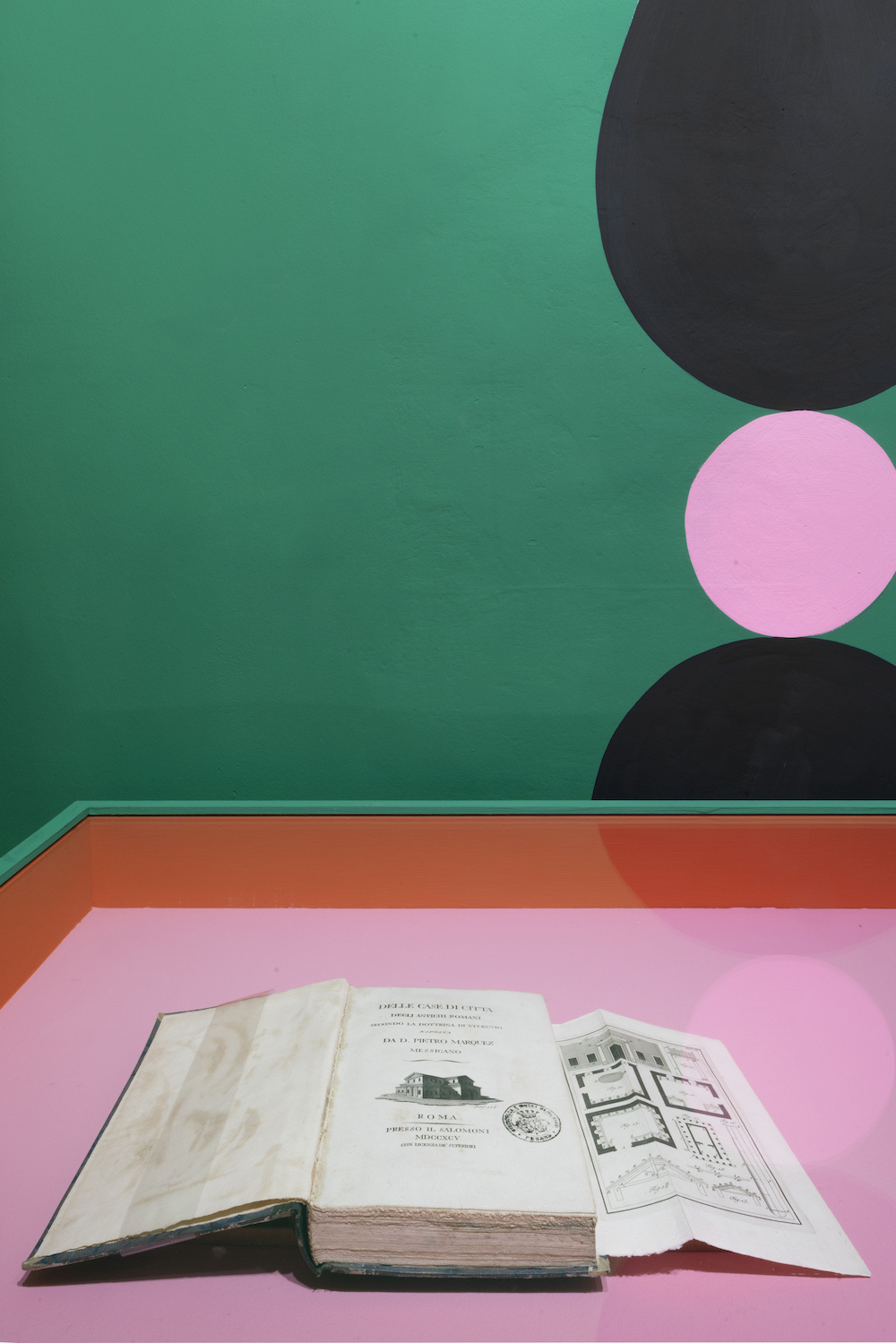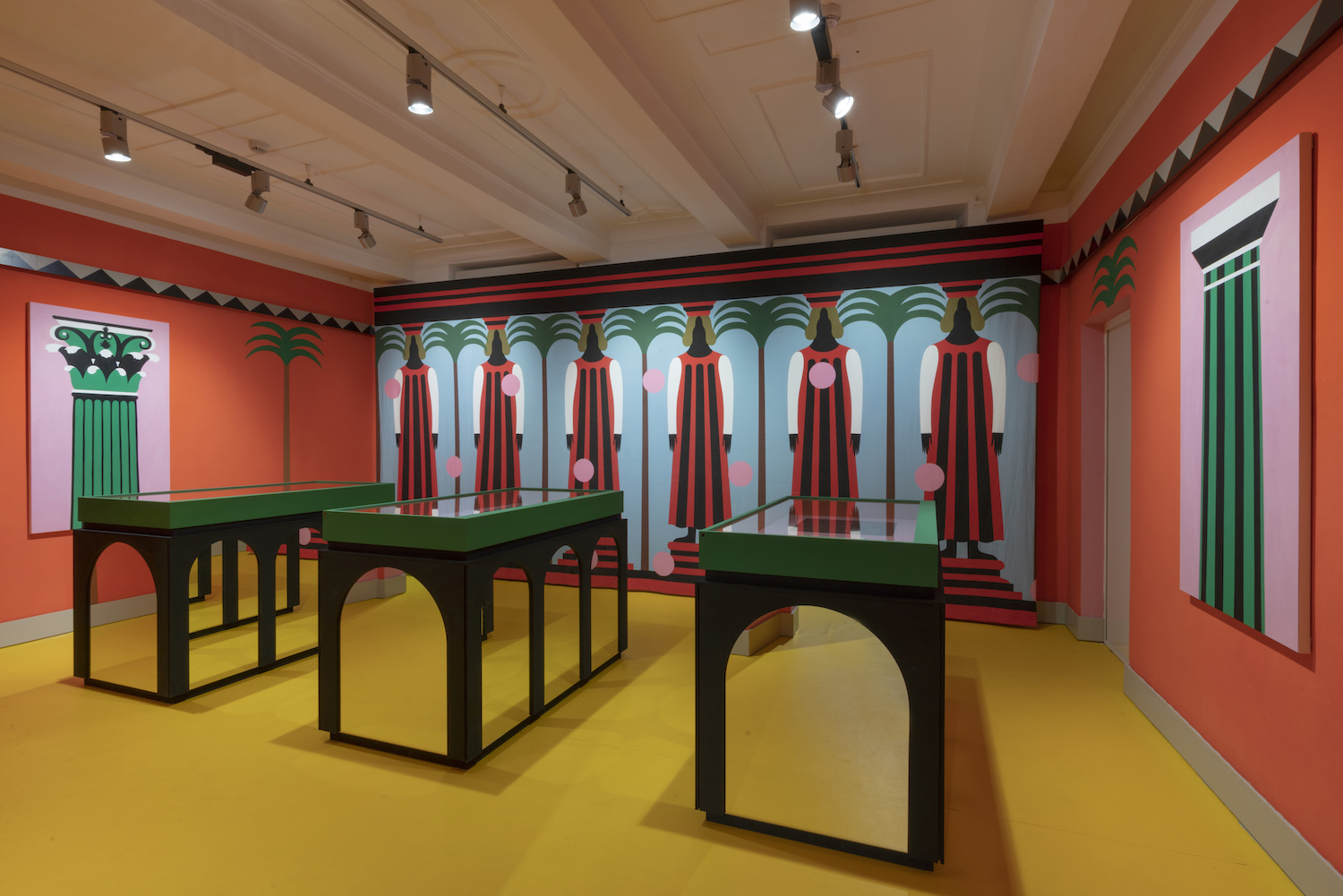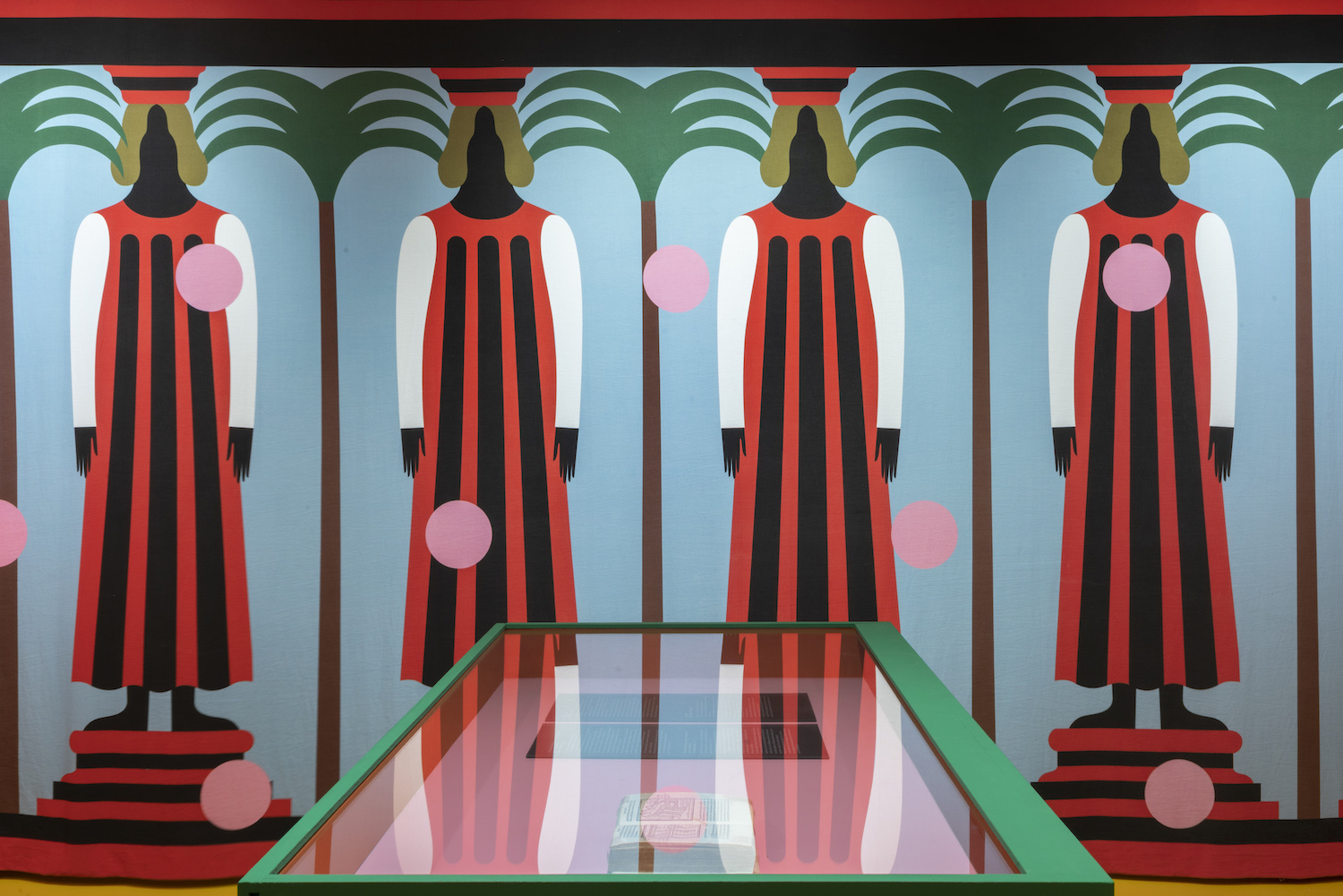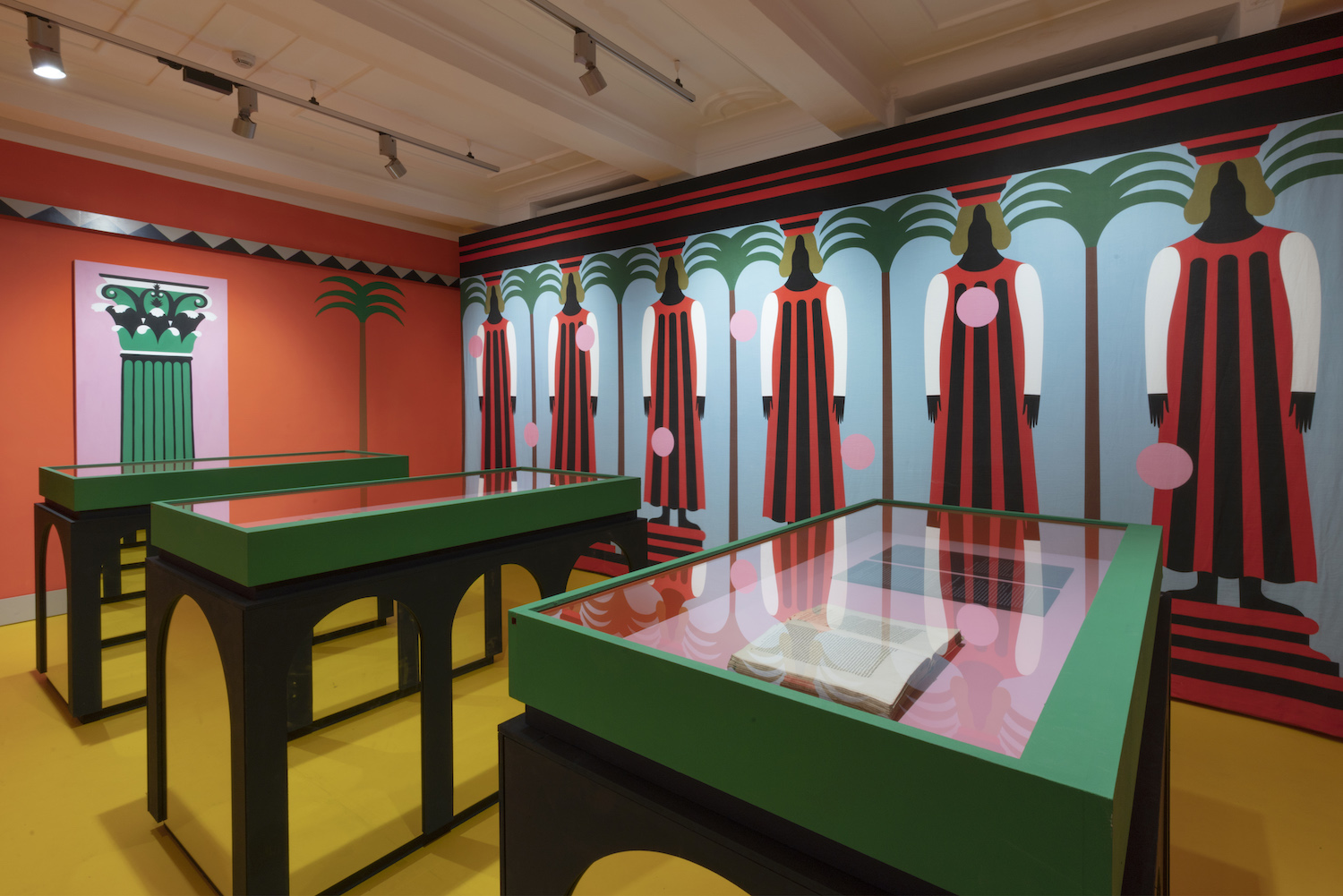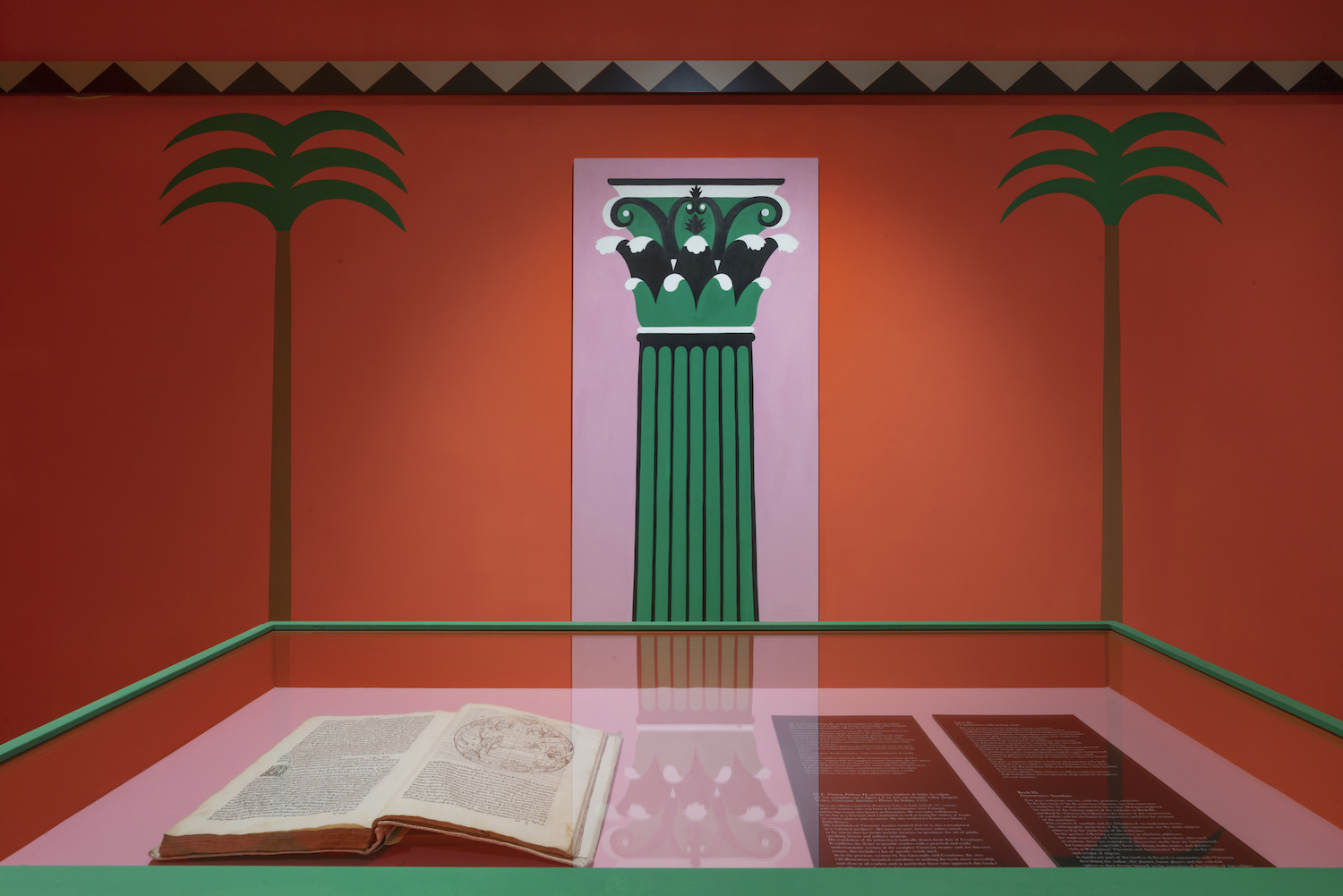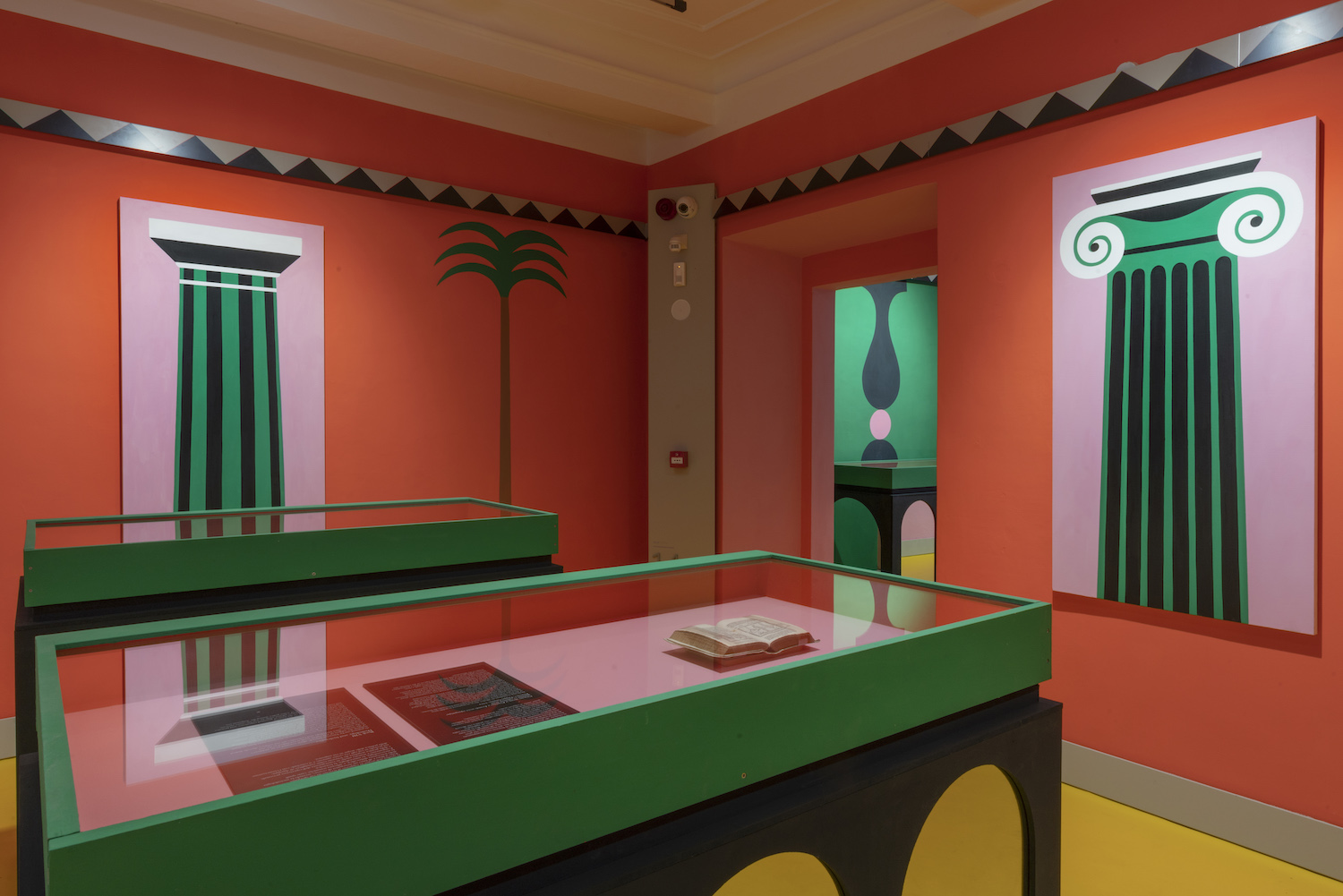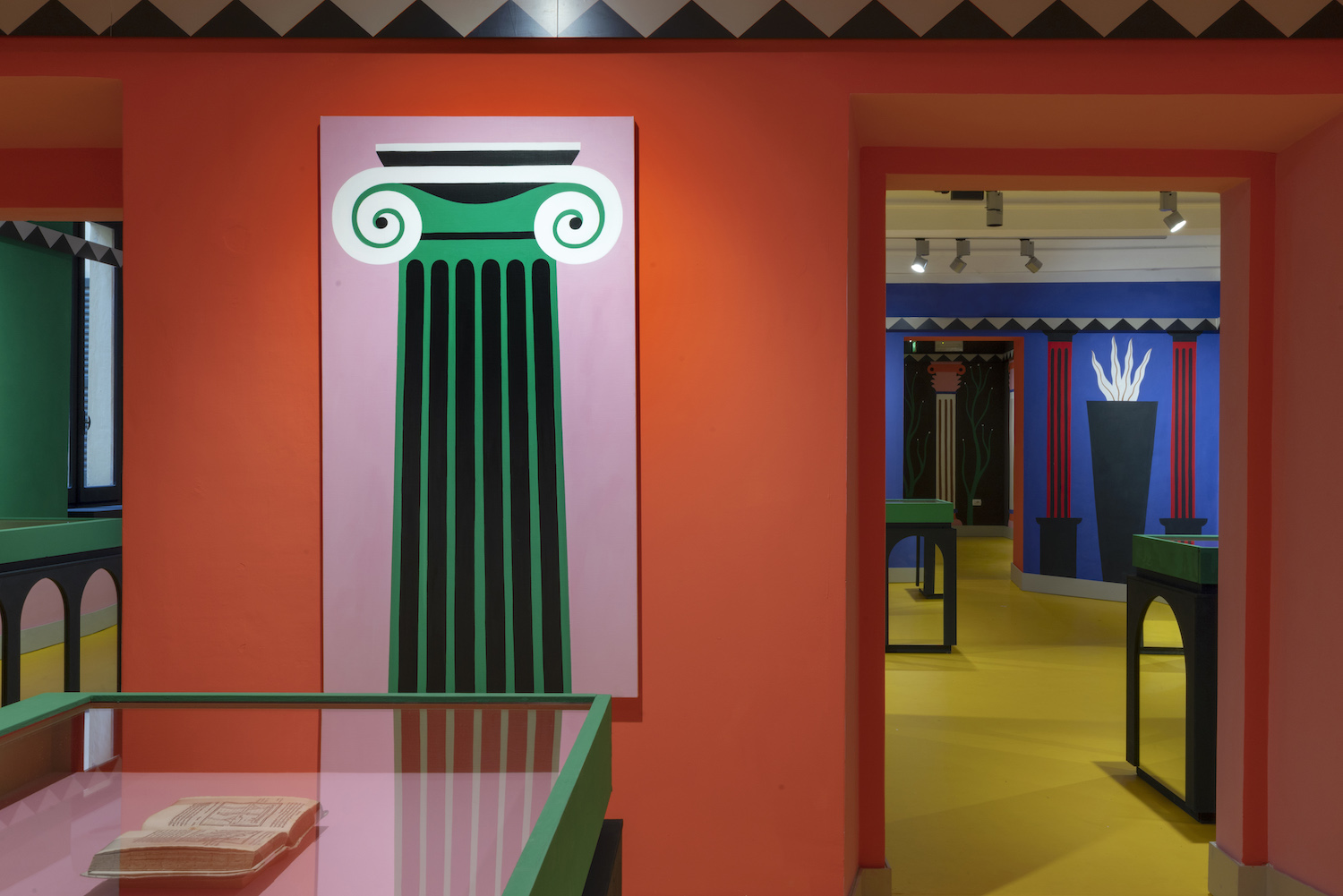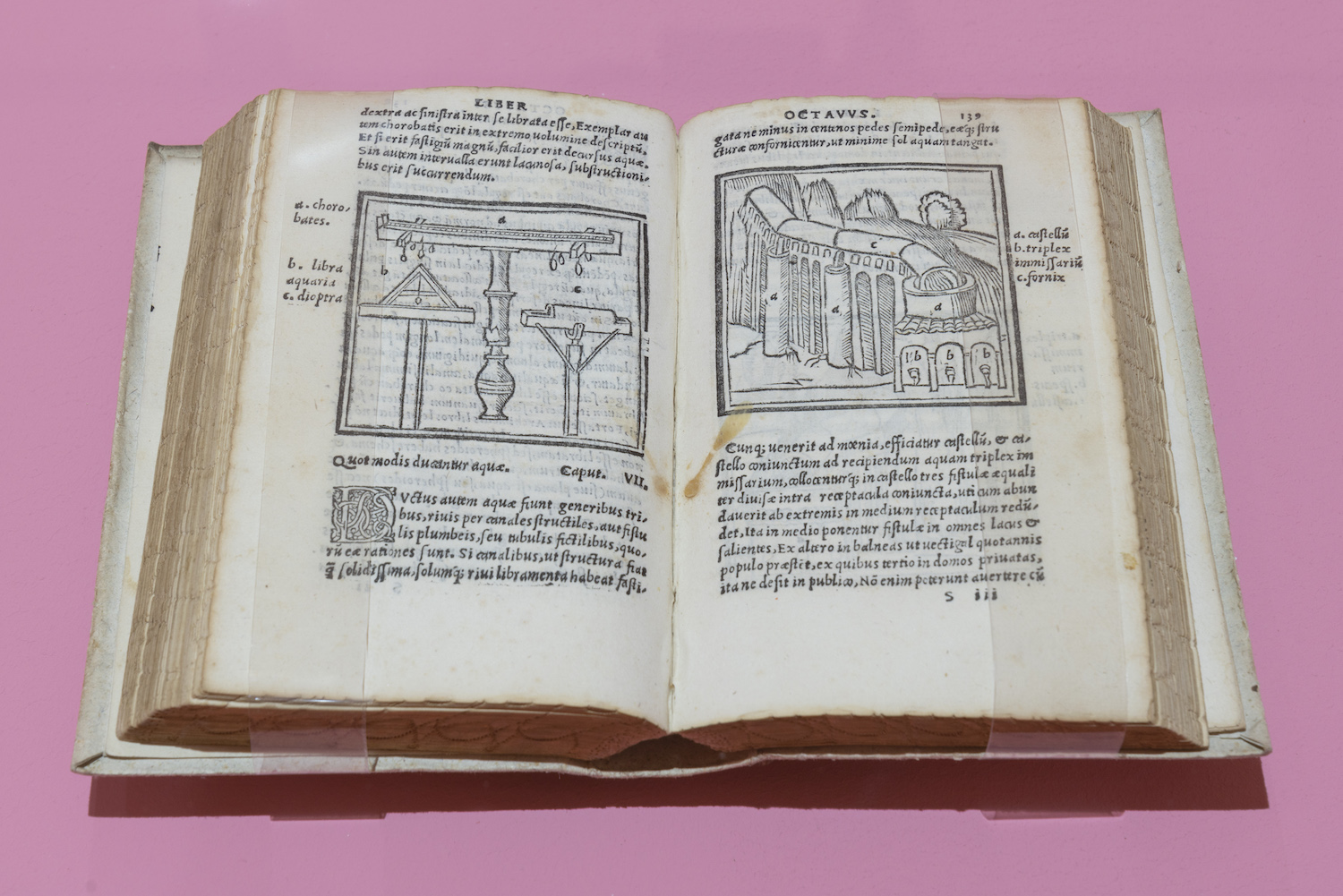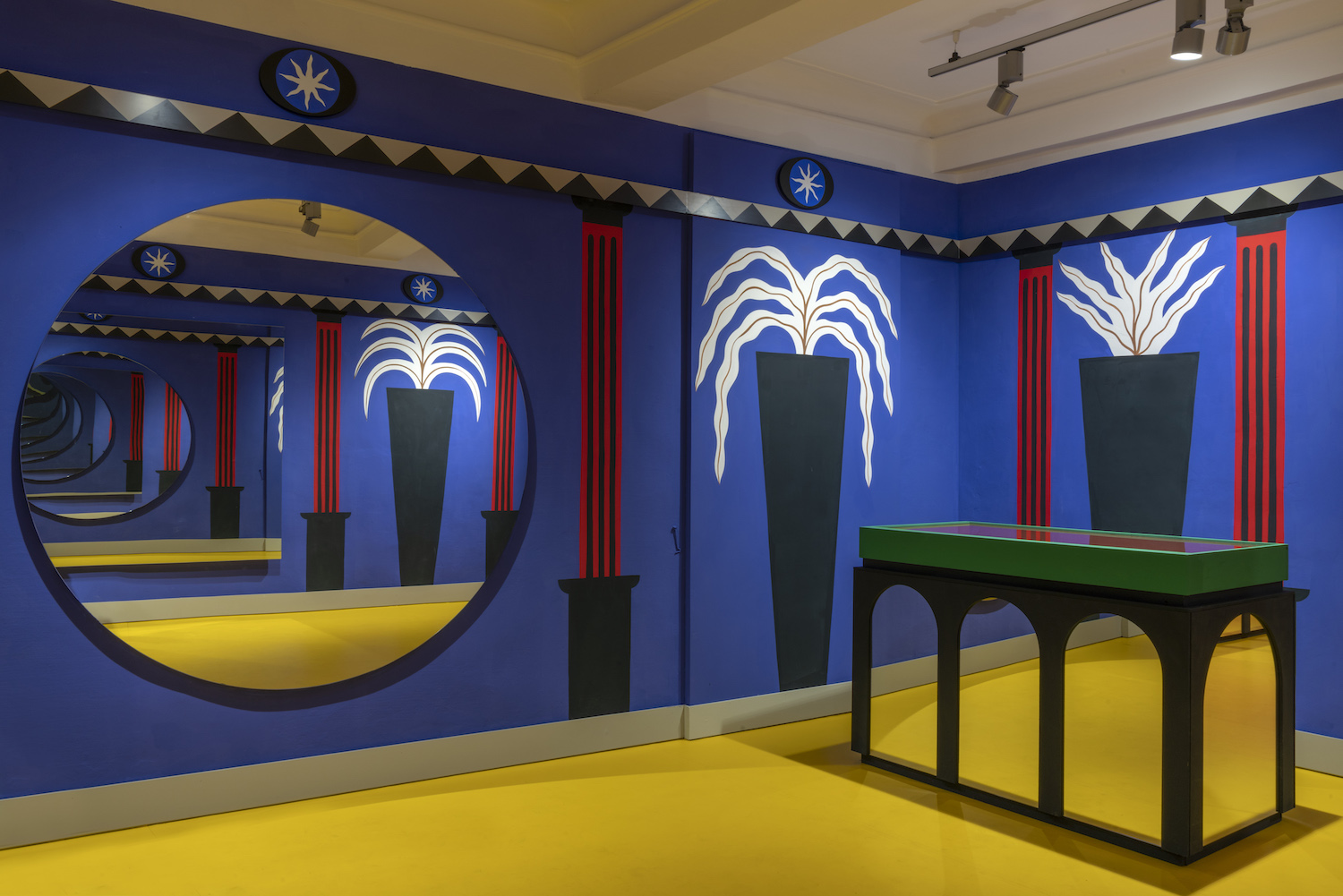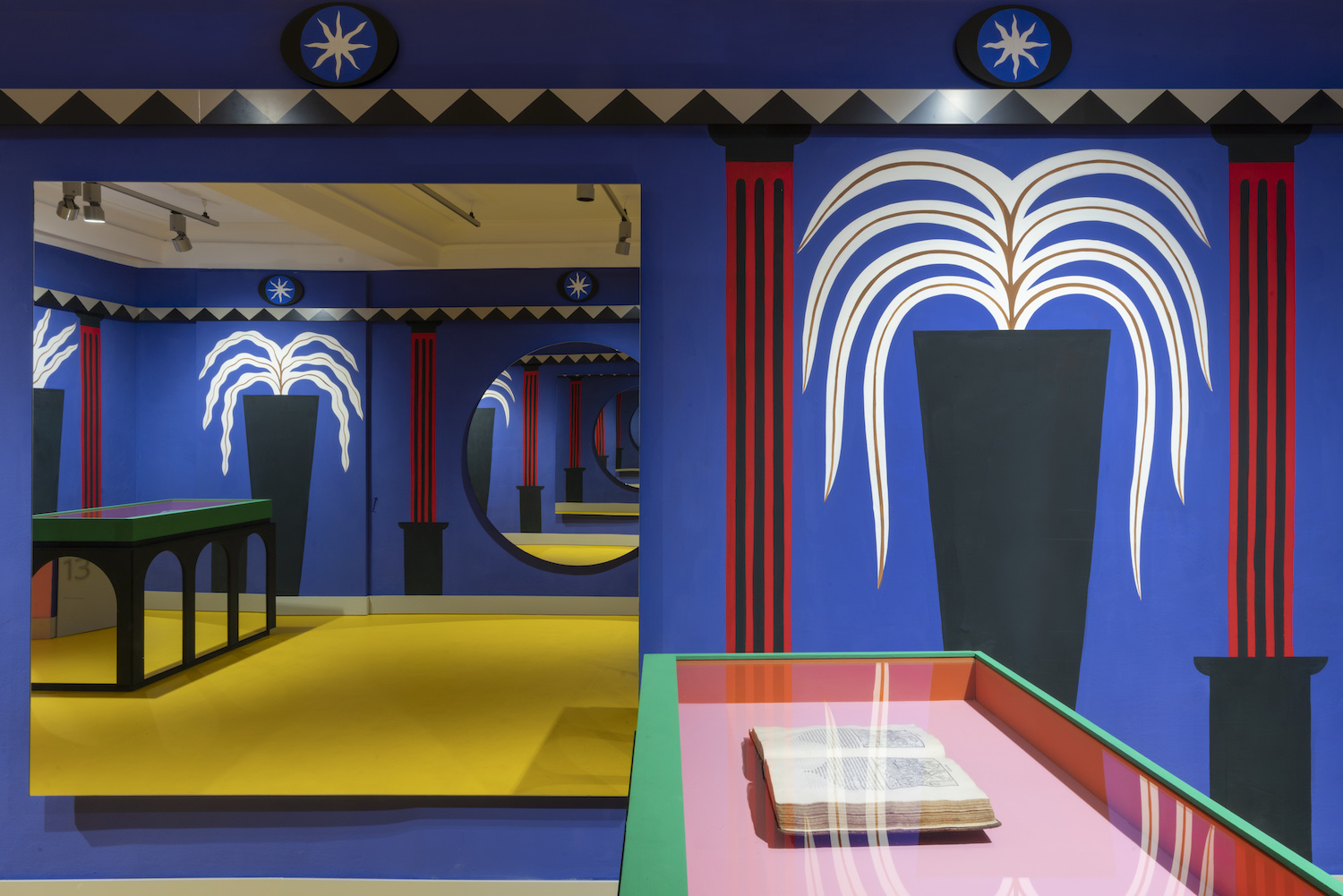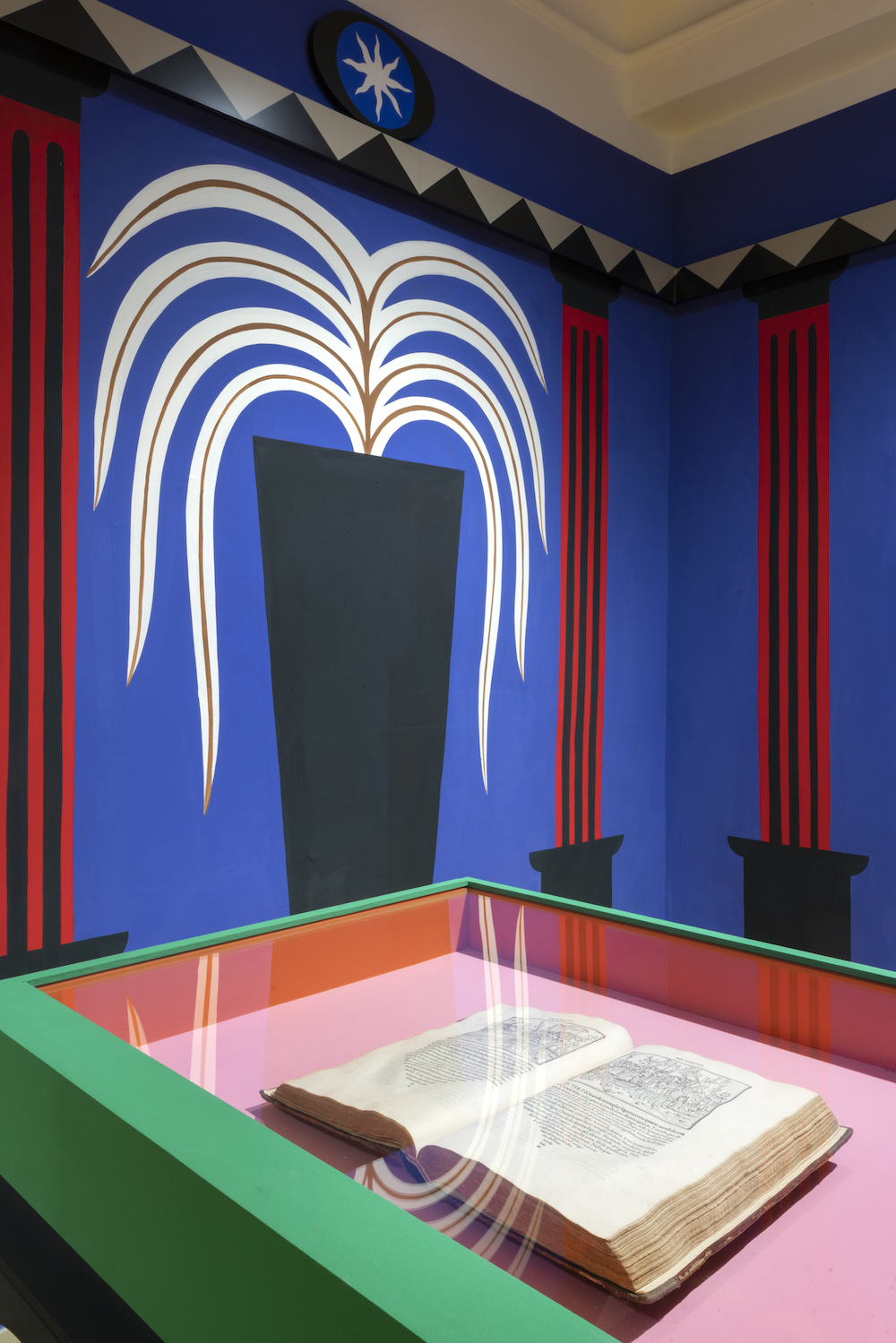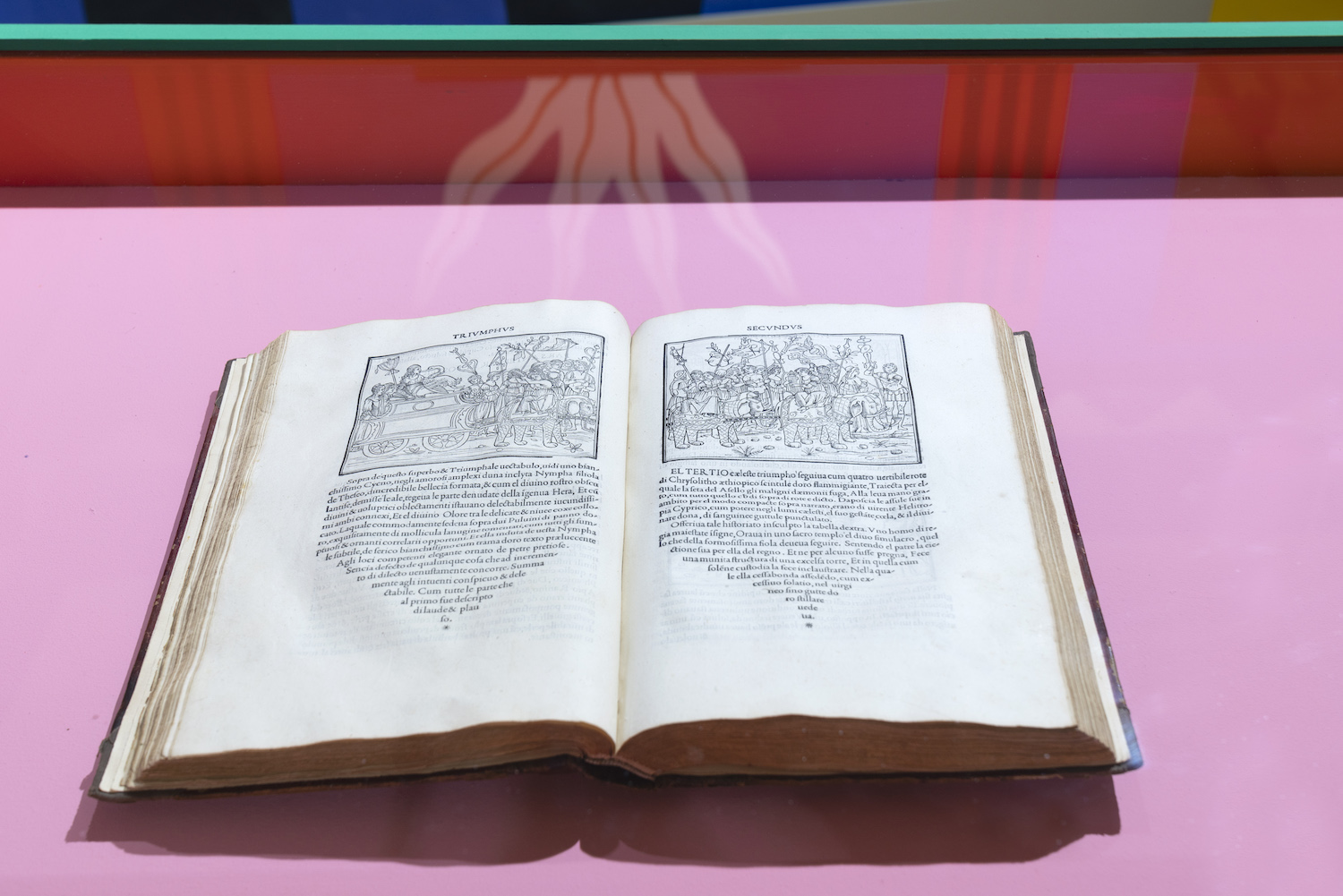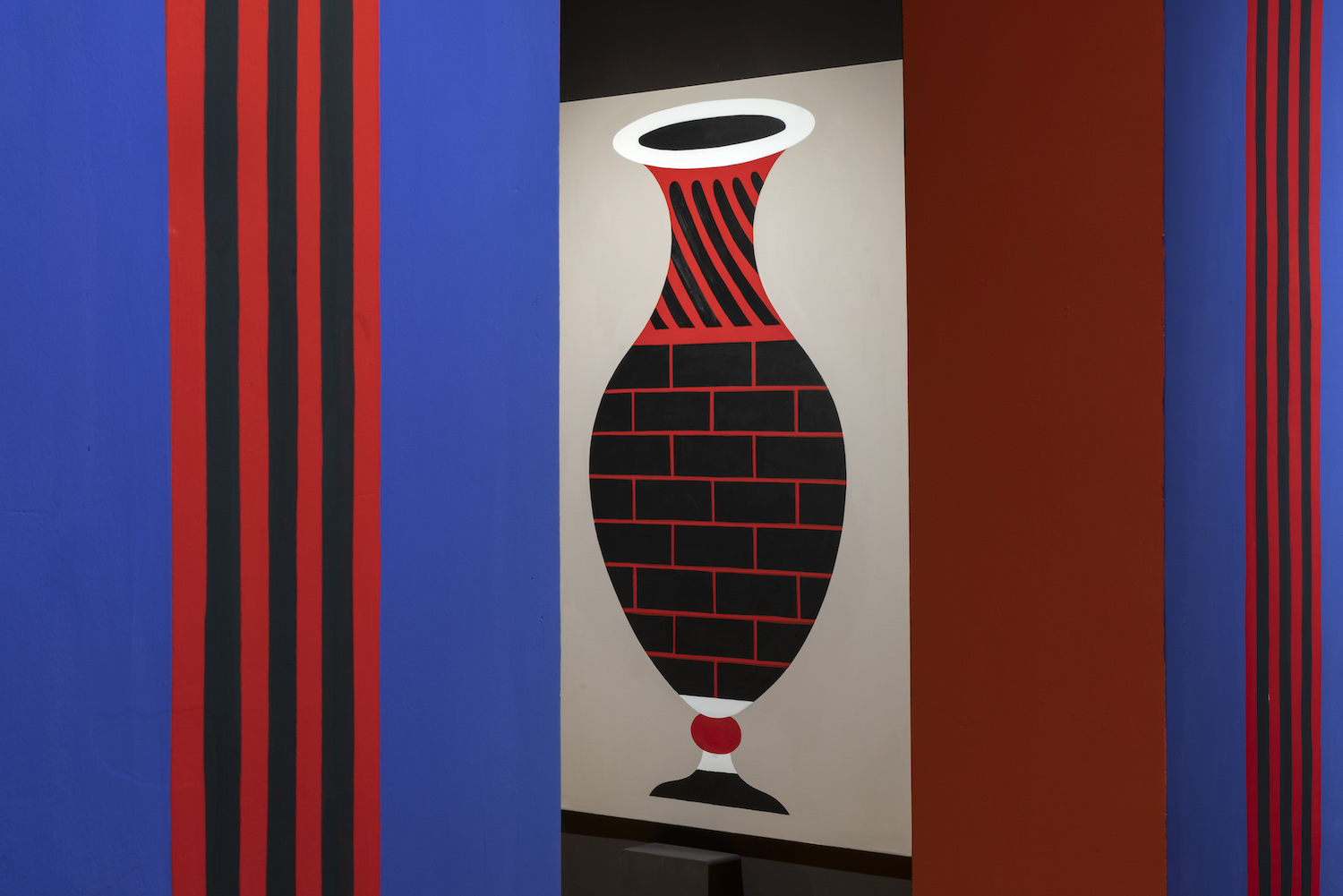TRACING VITRUVIO
An Oneiric Journey through the Pages of De Architectura
Musei Civici, Pesaro, 2019
Curated by Marcello Smarrelli
Scientific advisor: Brunella Paolini
Photo: Lorenzo Palmieri
Tracing Vitruvio, an Oneiric Journey through the Pages of De Architectura is a site specific project designed for Musei Civici in Pesaro, consisting of three-dimensional works and paintings with a highly scenic nature that create a fascinating and involving dimension to accompanies the presentation of ten different editions of De Architectura, from the Biblioteca Oliveriana.
The exhibition starts from the facade of Palazzo Mosca, continues through the courtyard, with spectacular installations inspired by Vitruvian architecture, then inside the museums, following two guiding threads. One is more traditional and strictly philological, analysing the critical and publishing acclaim of the text by Vitruvius dating to the 1st century B.C., widely popular in the Renaissance after the printing press was invented. This success is documented in great detail by the Olivieri collections which include several De Architettura editions, some very rare and valuable. Ten of them, carefully selected, are exhibited at the Musei Civici, displayed in chronological order, each of them opened on one of the ten volumes which make up the book, to provide a complete overview and analyse their contents in detail. Then there is the freer and more visionary side, created by Agostino Iacurci, where current research is very close to antique subjects and to the study on how colour was used by architecture and sculpture in the classical age.
To accompany the presentation of the volumes of De Architectura the artist has set up a pathway where Vitruvian shapes and creations are redesigned using his kaleidoscopic and surreal pictorial language. Caryatids, capitals, columns, temples, seem to come to life again, revitalised by the use of strong and bright colours, thus freeing classical antiquity from the ethereal candour and aura or Olympian balance which Neoclassicism has passed on to us; the resulting image is an architecture born of a Mediterranean population, strongly connected with colour, light, always in constant tension between the Apollonian and Dionysian element, between sense and sensibility.
The work by Iacurci serves as additional commentary by images to the volumes, in dialogue with the artists from the past, who – using the engraving technique – had strived to illustrate Vitruvian writings, often with aesthetic results of the highest order. The artist provides a new and original interpretation for them, through his contemporary, smart and ironic outlook, with a strongly oneiric component. It is almost like daydreaming, a sort of modern Hypnerotomachia Poliphili, the celebrated allegorical novel by attributed to Francesco Colonna - with 169 xylographic drawings – which constitutes one of the most famous and widely used iconography sources in the Renaissance, a magnificent edition of which by Aldo Manuzio (Venice, 1499) will be displayed in the exhibition.


